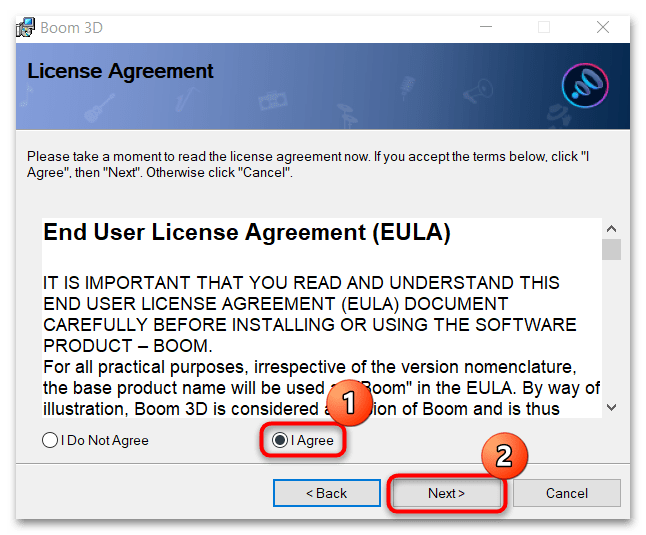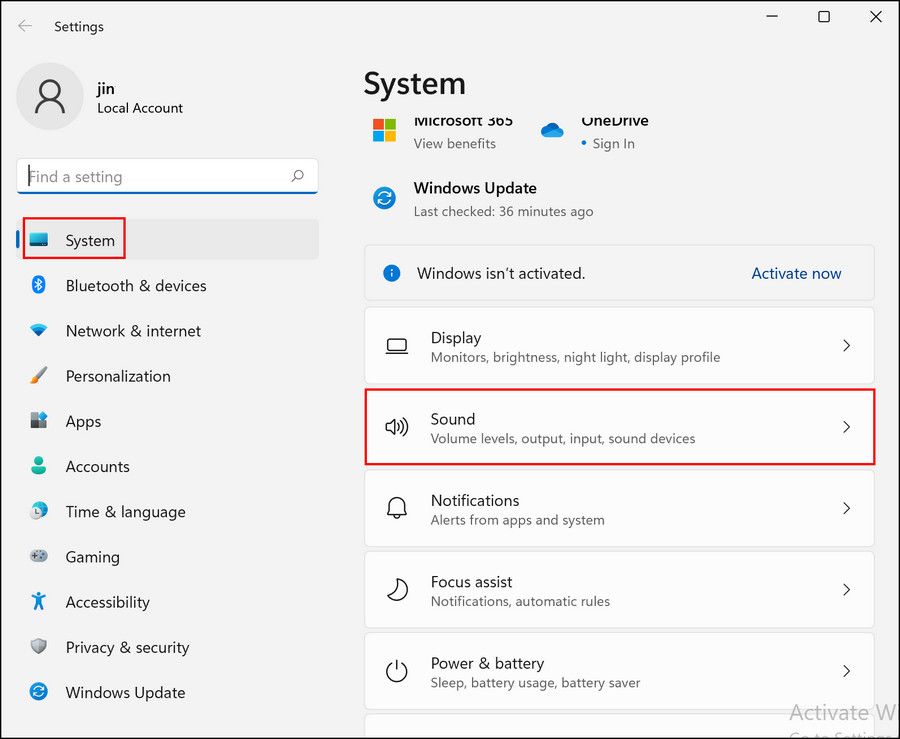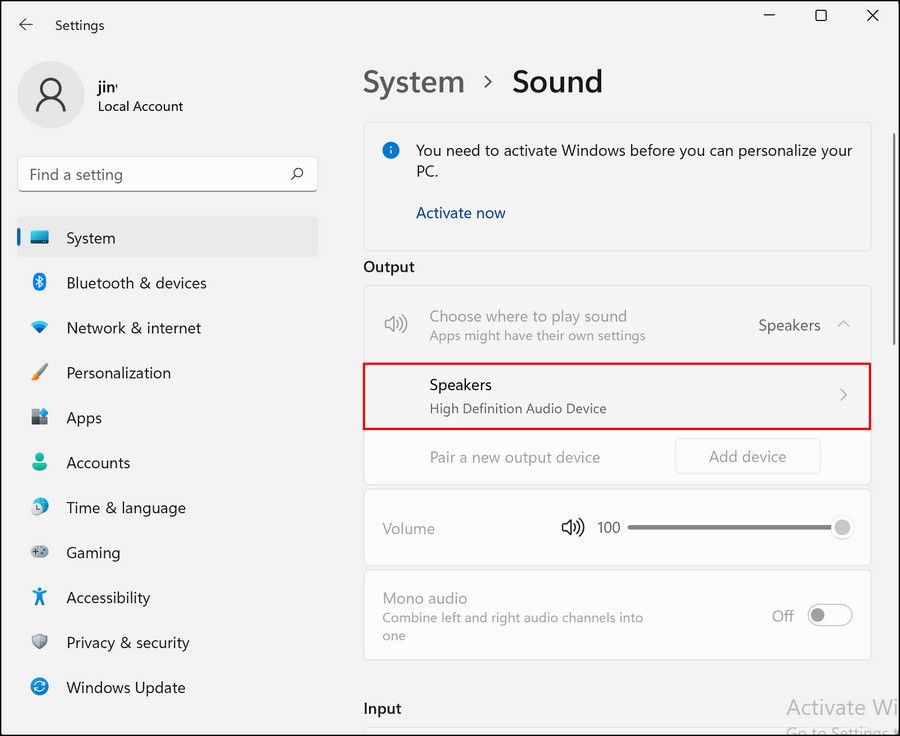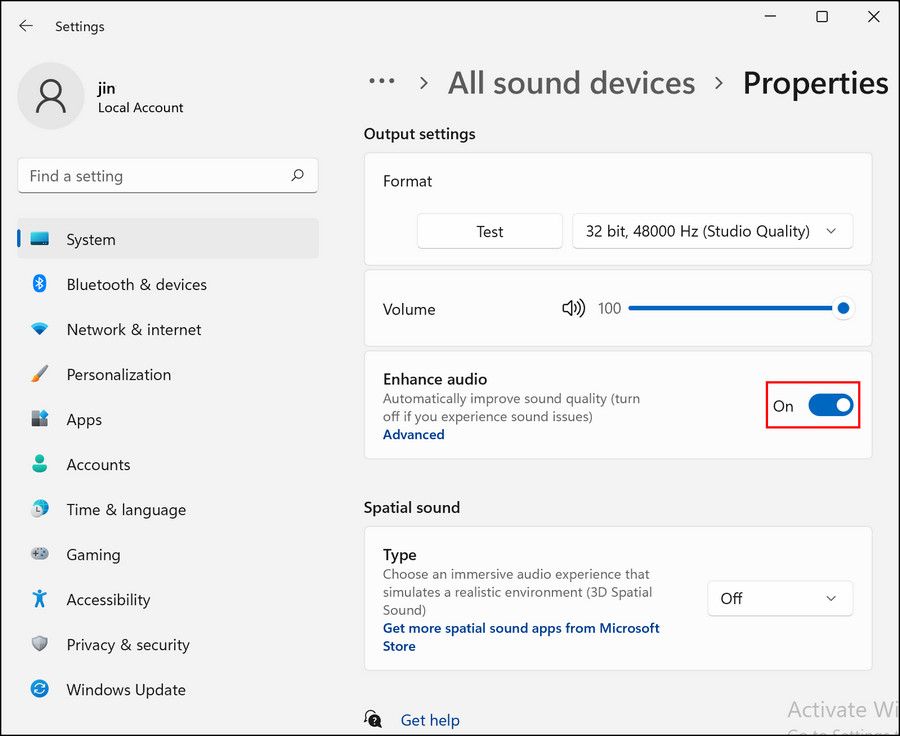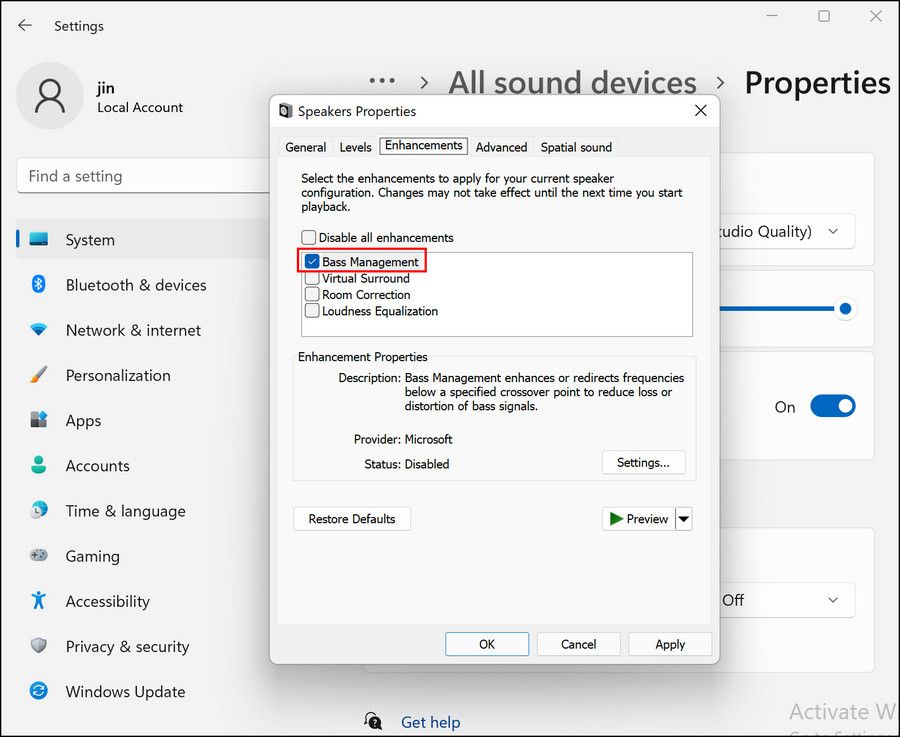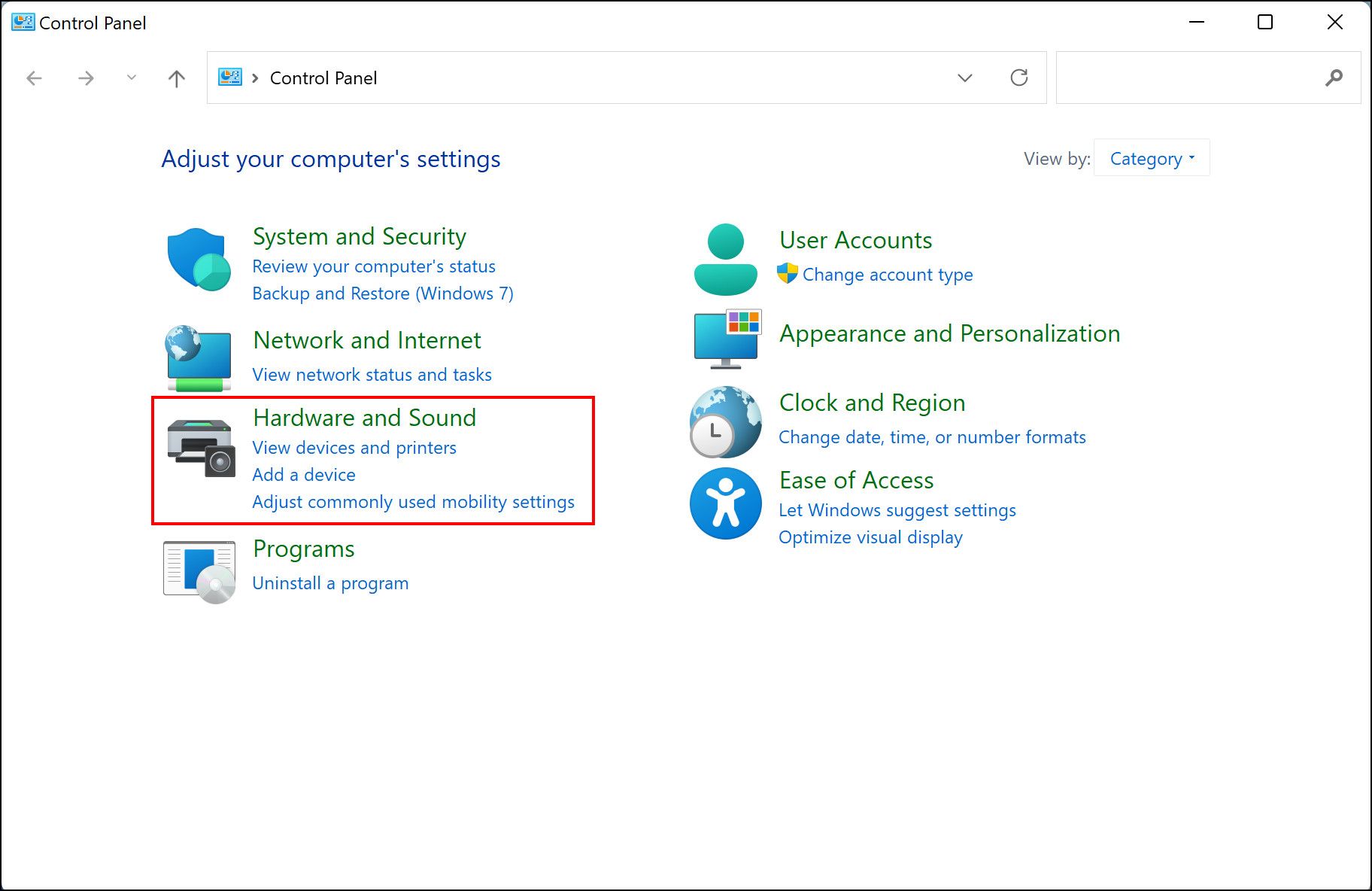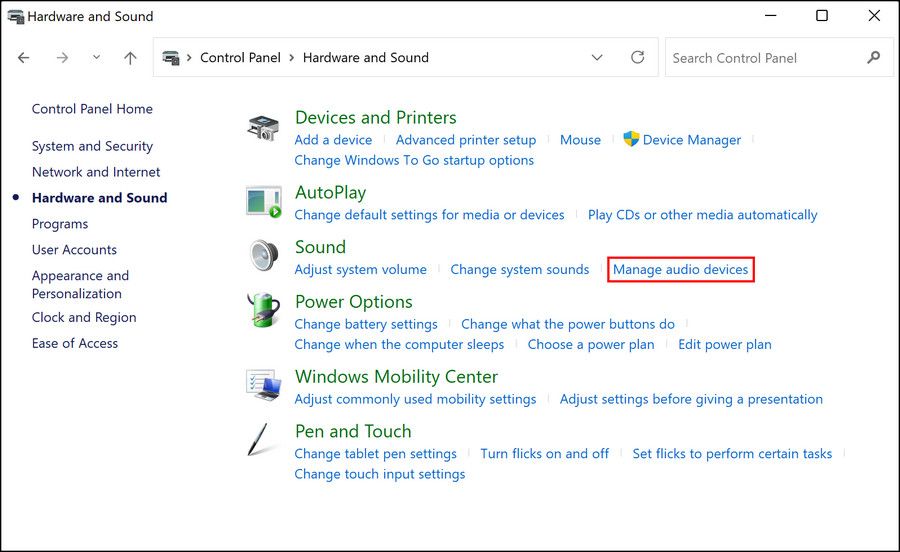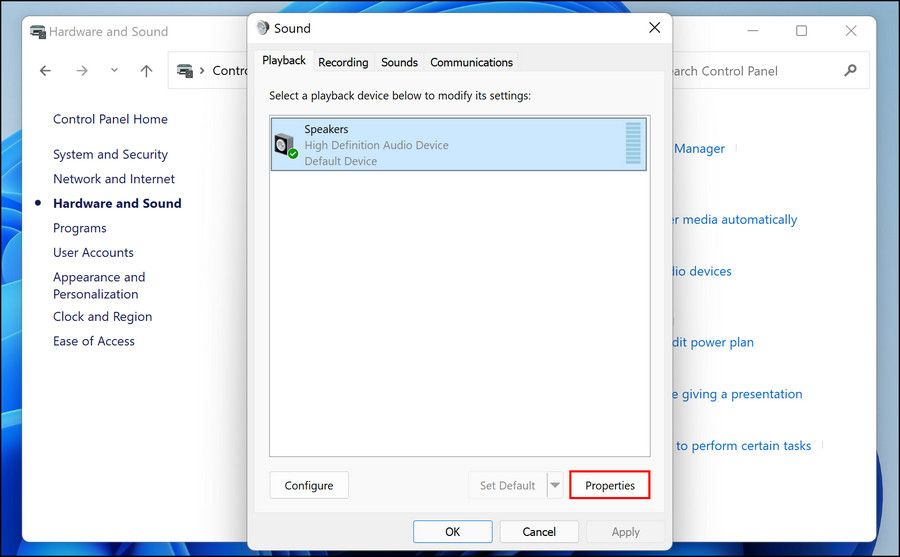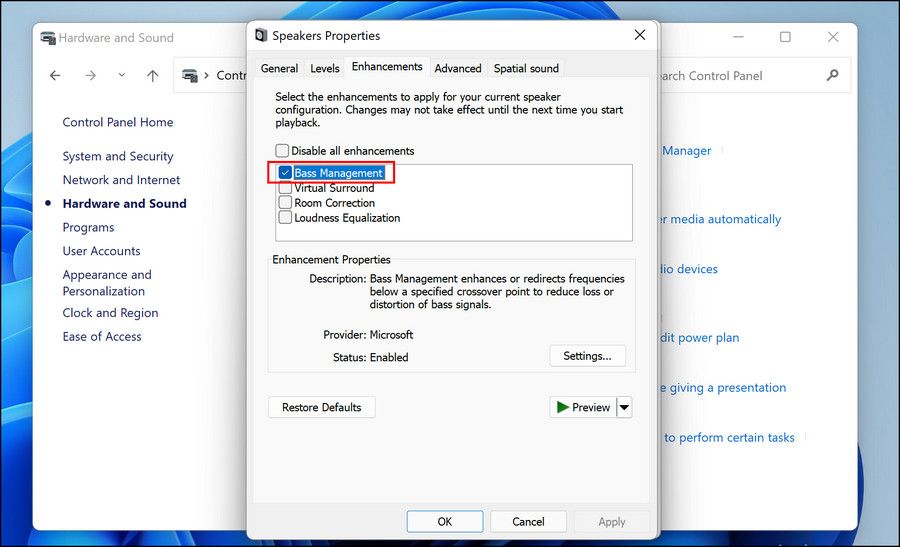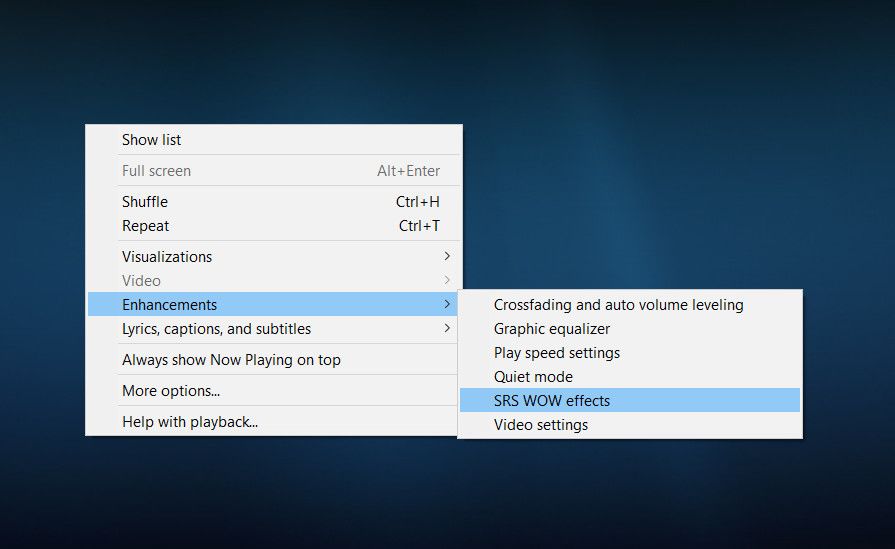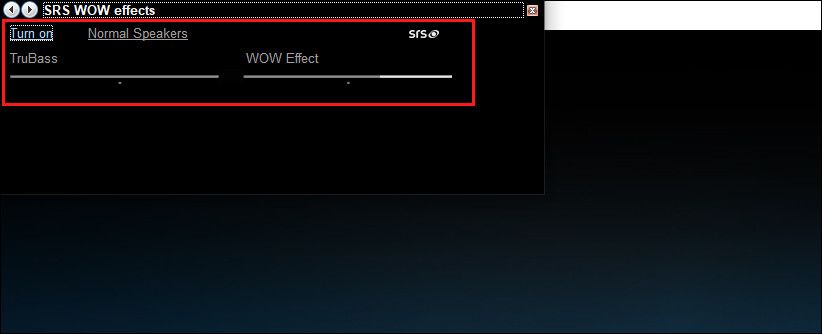Все способы:
- Способ 1: Встроенные средства
- Способ 2: Программное обеспечение звуковой карты
- Способ 3: Функции проигрывателя
- Способ 4: ПО наушников
- Способ 5: Сторонний софт
- Вариант 1: Boom 3D
- Вариант 2: FX Sound
- Вариант 3: Bass Treble Booster
- Вариант 4: Dolby Atmos
- Способ 6: Возможности аудиооборудования
- Вопросы и ответы: 0
Способ 1: Встроенные средства
Чаще всего пользователями для изменения звучания низких частот используется встроенный эквалайзер или параметры звуковой карты. Басы на компьютере с Windows 10 настраиваются с помощью встроенных средств, а именно – свойств звукового оборудования.
Сразу следует отметить, что данный способ подойдет не для всех звуковых плат. В некоторых из них встроенный эквалайзер не предусматривается. Для начала проверьте, есть ли у вас соответствующие настройки, и если они отсутствуют, тогда переходите к следующим способам.
- Кликните правой кнопкой мыши по значку громкости в нижней панели, затем из появившегося меню выберите пункт «Открыть параметры звука».
- Отобразится окно штатных «Параметров» с информацией о подключенных звуковых устройствах. Если потребуется, через выпадающее меню укажите используемое оборудование, затем кликните по строке «Свойства устройства».
- Далее кликните по строке «Дополнительные свойства устройства».
- В появившемся окне перейдите на вкладку «Улучшения» (она может называться «Дополнительные эффекты» или «Enhancements»), затем отметьте опцию «Виртуальный объемный звук» и «Эквалайзер», после чего станут доступны настройки эквалайзера.
- В дополнительном окне отобразятся ползунки встроенного эквалайзера, где можно вручную выставить уровень в децибелах, на который нужно увеличить/уменьшить басы.
- Также можно выбрать один из предустановленных пресетов, например «Бас», после чего сохраните настройки.
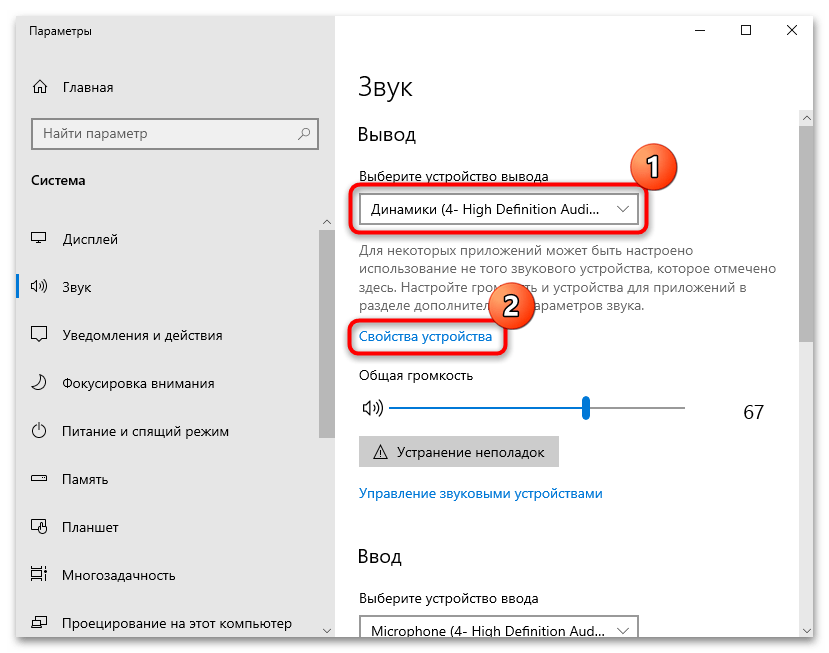
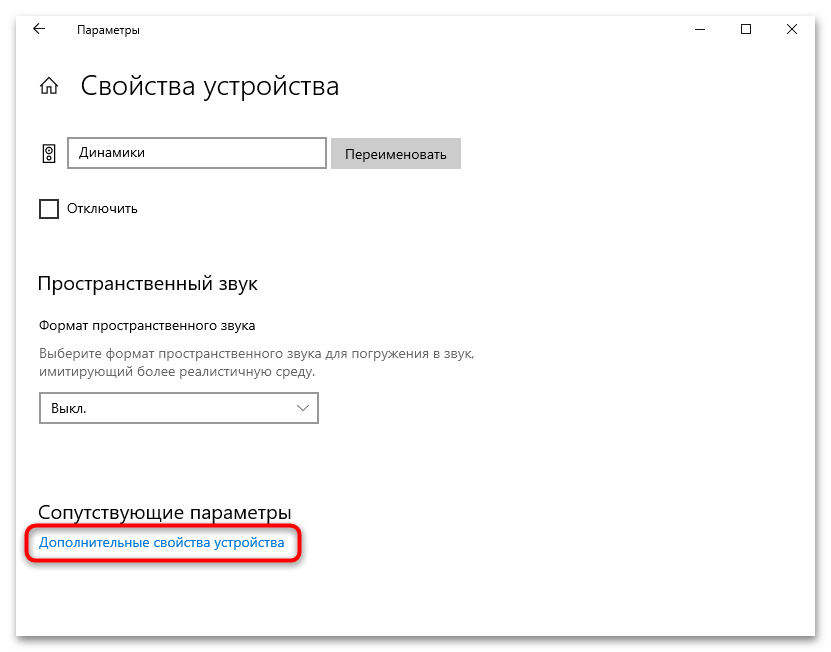
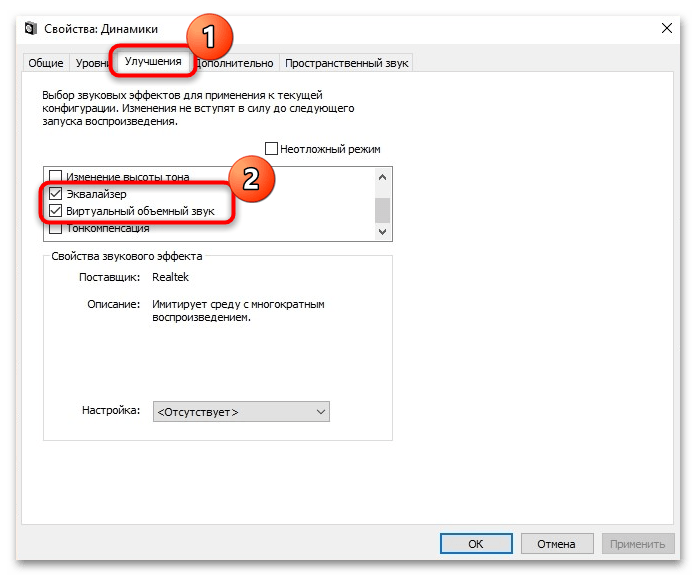
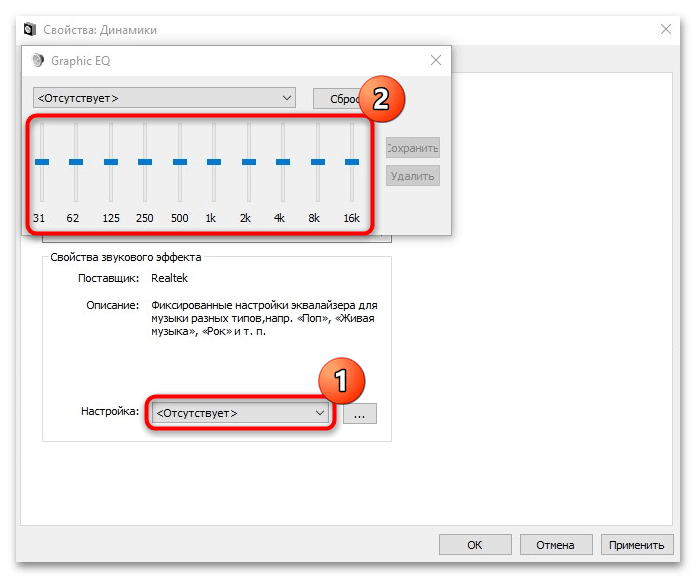
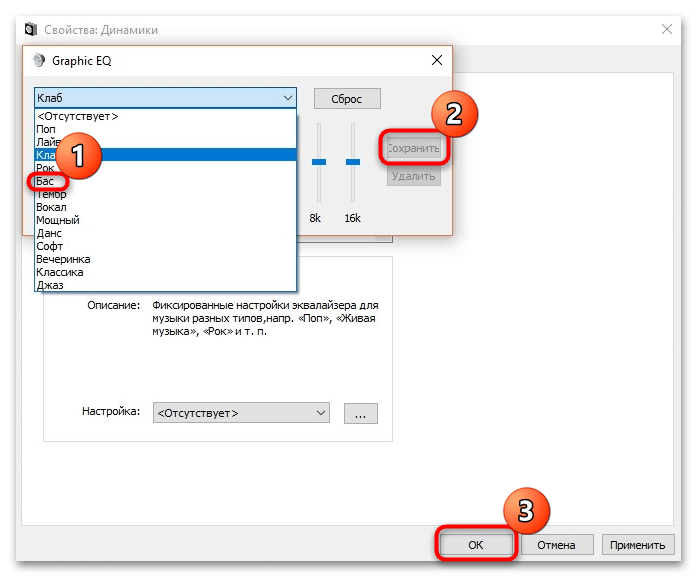
После данной настройки все звуки, которые будут идти через Windows 10 (от системных до игр и просмотра кино), станут воспроизводиться в соответствии с выбранными параметрами.
Способ 2: Программное обеспечение звуковой карты
Также некоторые модели звуковых карт, большинство из которых работают на аудиочипе от Realtek, имеют расширенные настройки в фирменном программном обеспечении.
- Откройте программу «Диспетчер Realtek HD», отыскав ее с помощью строки системного поиска.
Читайте также: Методы открытия Диспетчера Realtek HD в Windows 10
- Если на компьютере не предустановлено ПО, которое, по сути, должно инсталлироваться вместе с драйверами звуковой карты, установите его отдельно. О том, как это сделать, читайте в нашем отдельном материале.
Подробнее: Установка Realtek HD на компьютер с Windows 10
- На вкладке «Динамики» отображаются все доступные настройки звукового оборудования для вывода звука. При наличии на вкладке «Звуковой эффект» строки «Эквалайзер» используйте его параметры для того, чтобы настроить басы в Windows 10. Так же, как и в предыдущем способе, здесь должны быть готовые пресеты и ползунки для ручной настройки низких частот.
- По завершении настройки не забудьте сохранить новые параметры.
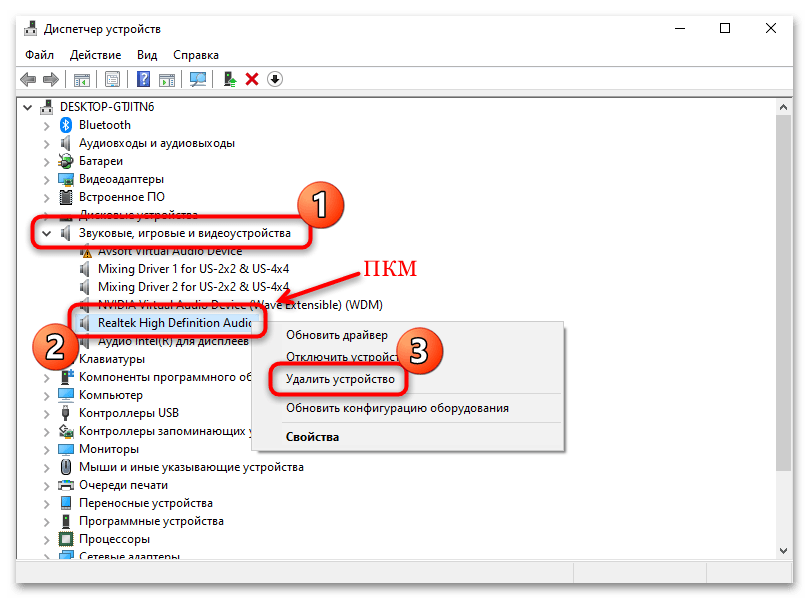
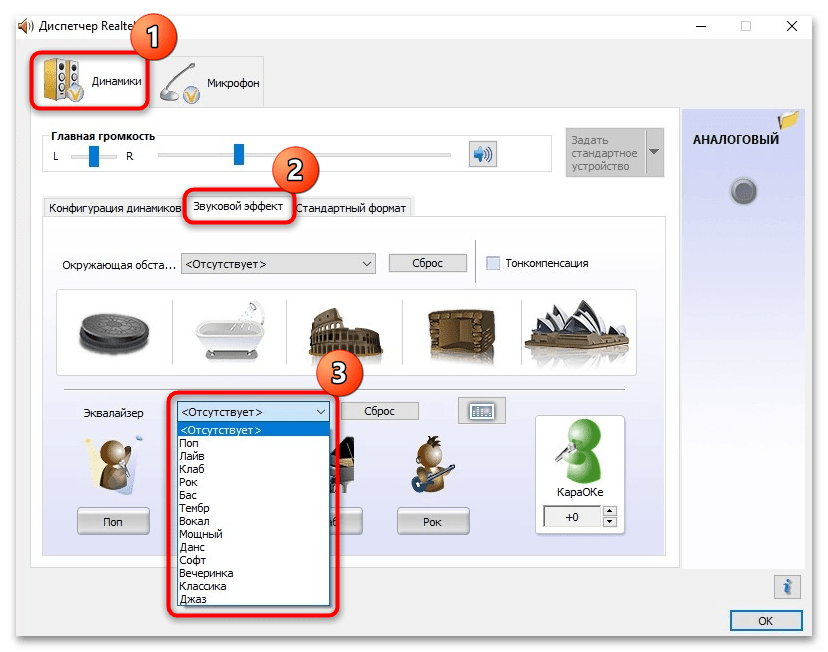
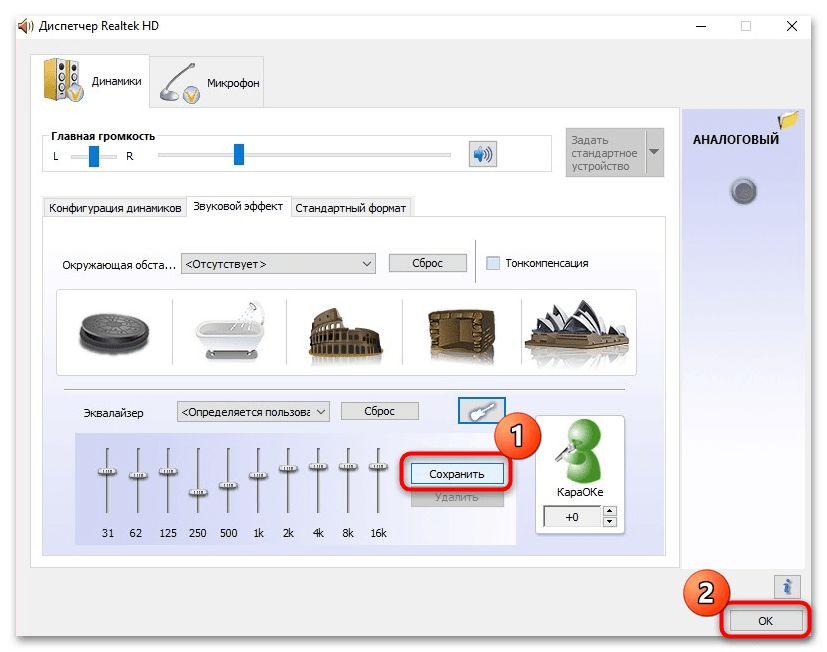
Помимо настройки басов и других частот, в «Диспетчере Realtek HD» предусматривается большое количество дополнительных параметров для улучшения звучания через выбранное оборудование. Причем функции зависят от модели звуковой карты – в некоторых случаях эквалайзер можно не найти.
Читайте также: Что делать, если не запускается Realtek HD в Windows 10
Способ 3: Функции проигрывателя
Настроить басы можно и в проигрывателе, через который осуществляется прослушивание музыки или просмотр фильма. Большинство из плееров поддерживает тонкую регулировку звучания на программном уровне, но при этом параметры будут работать только при использовании данного софта.
На примере одной из популярных программ для прослушивания музыки AIMP рассмотрим, как отрегулировать уровень низких частот:
- Переход в раздел с настройками звука осуществляется по-разному, в зависимости от скина плеера. Значок эквалайзера может быть вынесен отдельно в главное окно проигрывателя, а универсальный метод заключается в вызове меню путем клика по логотипу софта, где следует выбрать пункт «Менеджер звуковых эффектов».
- Находясь на вкладке «Эквалайзер», поставьте галочку у опции «Включить эквалайзер», чтобы изменение частот стало доступно.
- Ниже можно отрегулировать басы, используя ползунки слева и ближе к центру. Также есть возможность установить преднастройки, нажав на соответствующую кнопку внизу.
- Выберите один из предустановленных вариантов. Например, для увеличения баса используется пресет «Full Bass». Щелкните по кнопке «ОК», чтобы применить настройки.
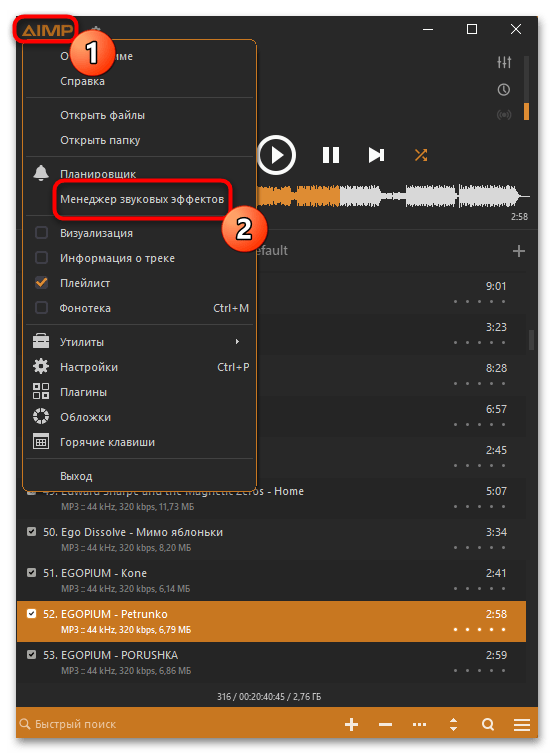
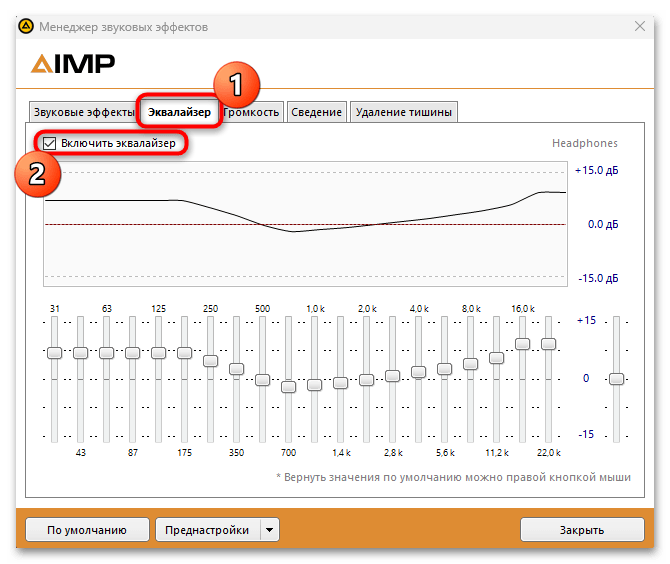
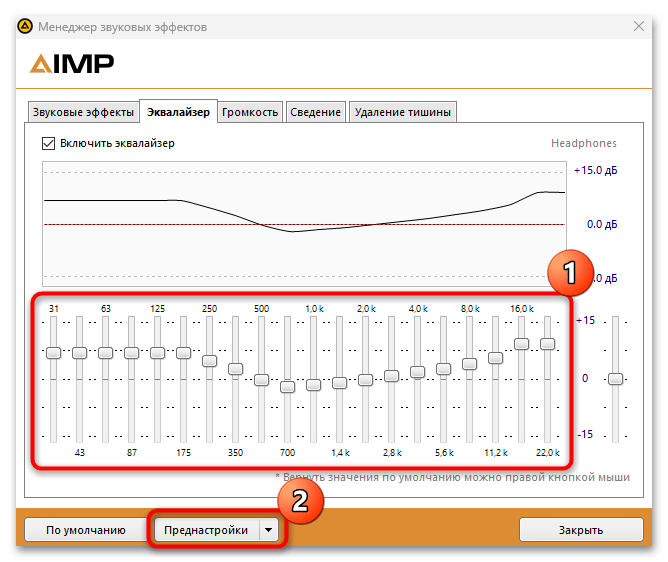
Перезагрузка компьютера не требуется – параметры вступят в силу мгновенно и произойдет изменение звучания. Большинство проигрывателей для Windows обладают аналогичными возможностями, но в некоторых из них есть больше полос эквалайзера, что позволяет более тонко настроить как низкие, так и средние или высокие частоты.
Читайте также: Программы для прослушивания музыки на компьютер
Способ 4: ПО наушников
Обладателям игровых девайсов, как правило, доступно фирменное программное обеспечение от производителя. Если наушники поддерживаются таким приложением, следует поискать настройку эквалайзера там. Поскольку в разных ПО собственный интерфейс, отыскать необходимый параметр вам понадобится самостоятельно. В большинстве случаев там уже есть пресет, связанный с усилением басов, а также возможна ручная регулировка с сохранением измененного профиля под свой вкус.
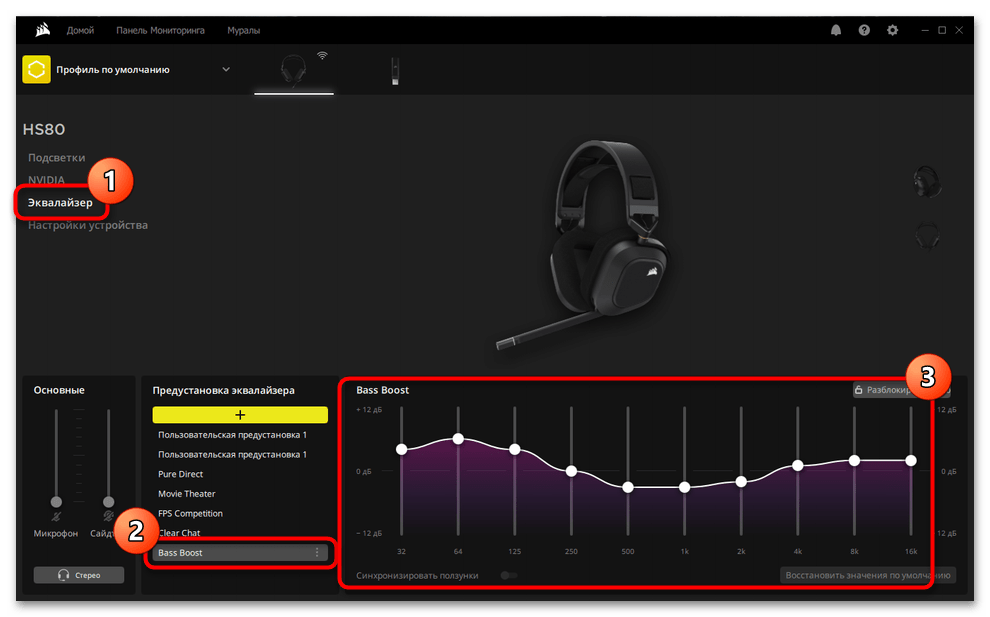
Способ 5: Сторонний софт
Для Windows разработаны специализированные программы, предназначенные для регулировки и усиления басов на компьютере. Их основные преимущества заключаются в большом количестве различных настроек для улучшения звучания, а также в поддержке настроенного звучания во всей системе, включая плееры и игры.
Вариант 1: Boom 3D
Boom 3D – одно из самых популярных приложений для улучшения звука. Здесь предусматривается режим 3D Surround, продвинутый 31-полосный эквалайзер с предустановленными пресетами, менеджер для регулировки громкости в отдельных приложениях, современный аудиопроигрыватель и даже возможность прослушивания интернет-радио. Средство довольно многофункциональное, но распространяется на платной основе, при этом предоставляется пробный период на срок 30 дней для ознакомления со всеми функциями софта без ограничений.
Скачать Boom 3D с официального сайта
- Перейдите по ссылке выше и скачайте программу, нажав на соответствующую кнопку, после чего потребуется ее инсталлировать в систему, следуя инструкциям мастера пошаговой установки.
Следует отметить, что для корректной работы софта может потребоваться дополнительное программное обеспечение — .NET 5.0 Desktop Runtime. После запуска инсталлятора Boom 3D и при подтверждении действия вы будете перенаправлены на страницу официального сайта софта от Microsoft, а загрузка EXE-файла начнется автоматически. После скачивания останется его запустить и выполнить установку.
- Отобразится главное окно программы с основными инструментами для настройки звучания и басов. На вкладке «Объемный 3D-звук» активируйте пункт «Эквалайзер», после чего из меню справа можно выбрать одну из предустановок, например «Bass Boost» для более выраженного баса.
- В центральной части окна станут доступны ползунки для настройки частот.
- После активации опции «Дополнительно» отобразится еще больше полос эквалайзера для более тонкой настройки звука.
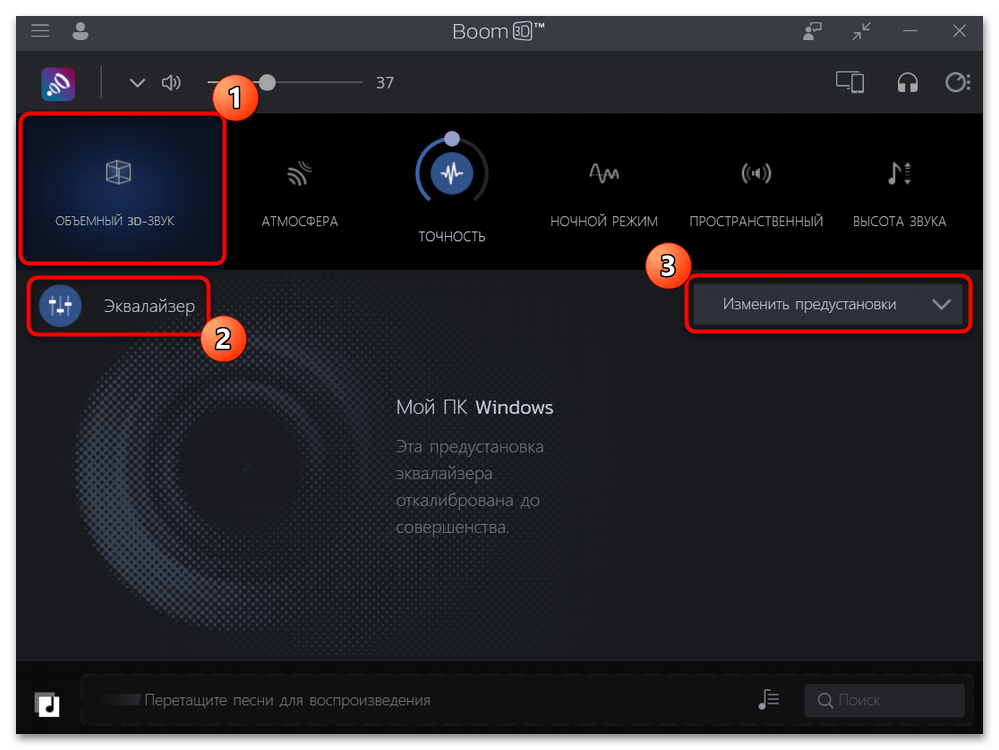
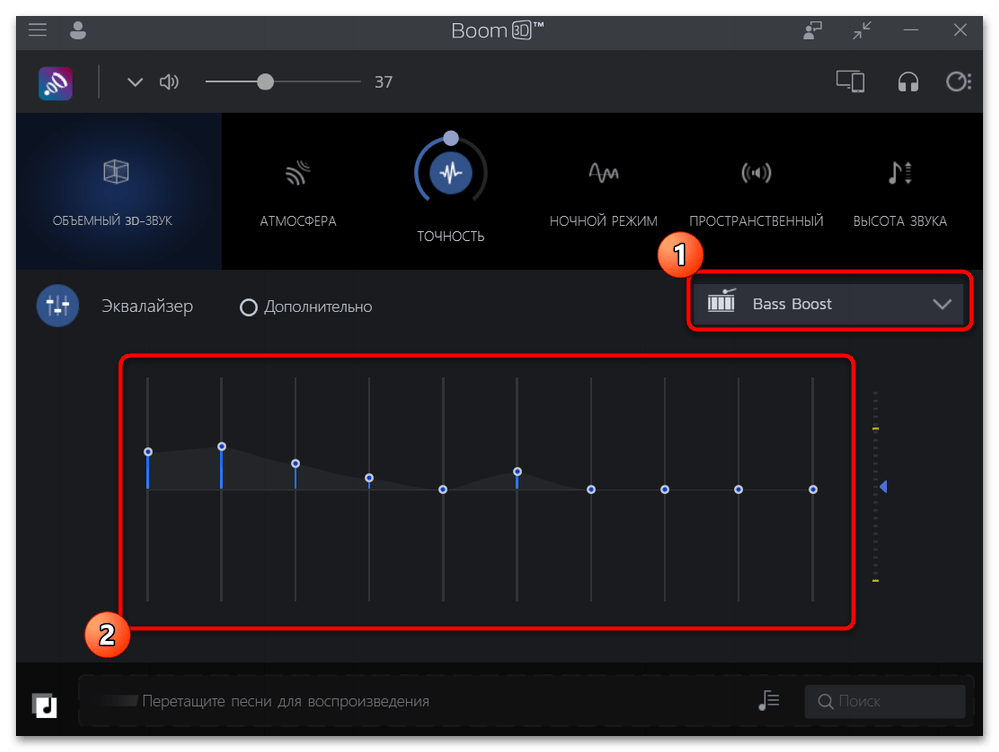
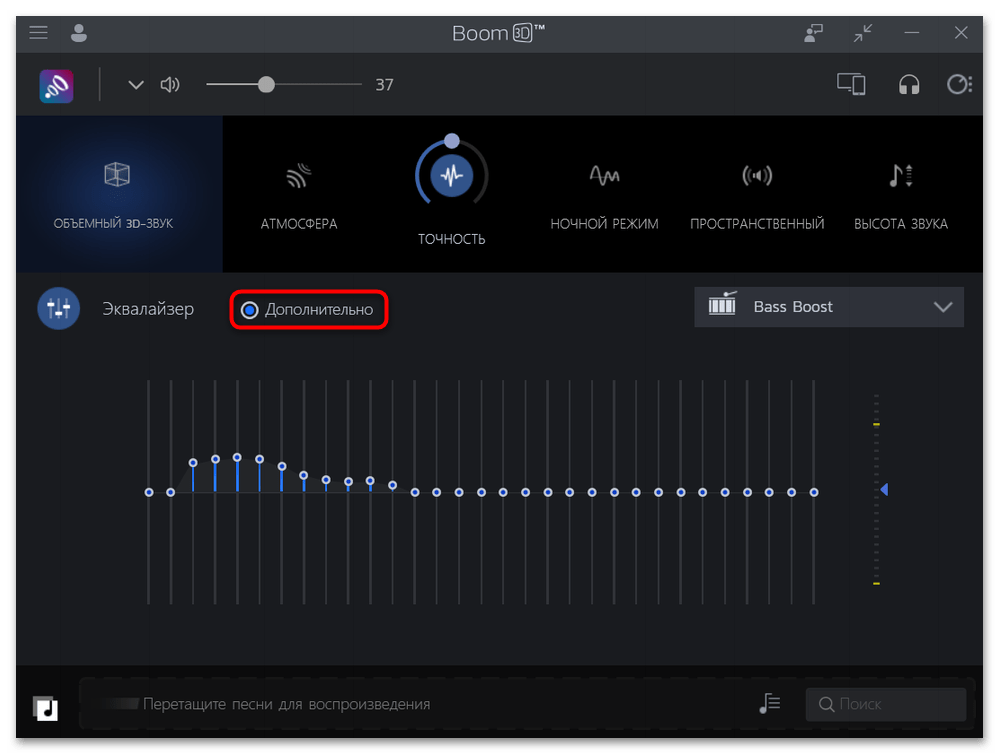
Что касается других настроек, то они регулируются с помощью ползунков, расположенных на панели инструментов. Достаточно выбрать один из звуковых эффектов, затем его отрегулировать, а все настройки будут применяться в режиме реального времени.
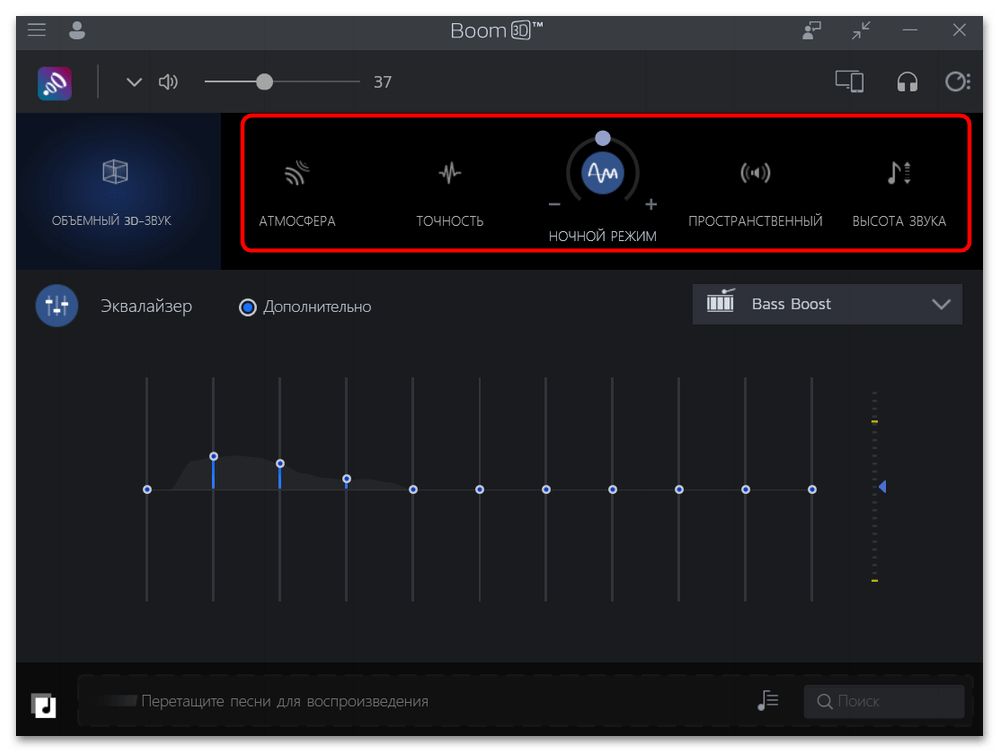
Вариант 2: FX Sound
FX Sound – простое и бесплатное решение для регулировки звучания на программном уровне. С его помощью можно настроить басы и выбрать один из предустановленных режимов.
Скачать FX Sound с официального сайта
Пользоваться программой достаточно просто: установите ее, после чего фирменные драйверы интегрируются в систему. В главном окне отображается 9-полосный эквалайзер, с помощью которого происходит регулировка частот. Также тут доступно усиление басов – используйте соответствующий ползунок для этого.
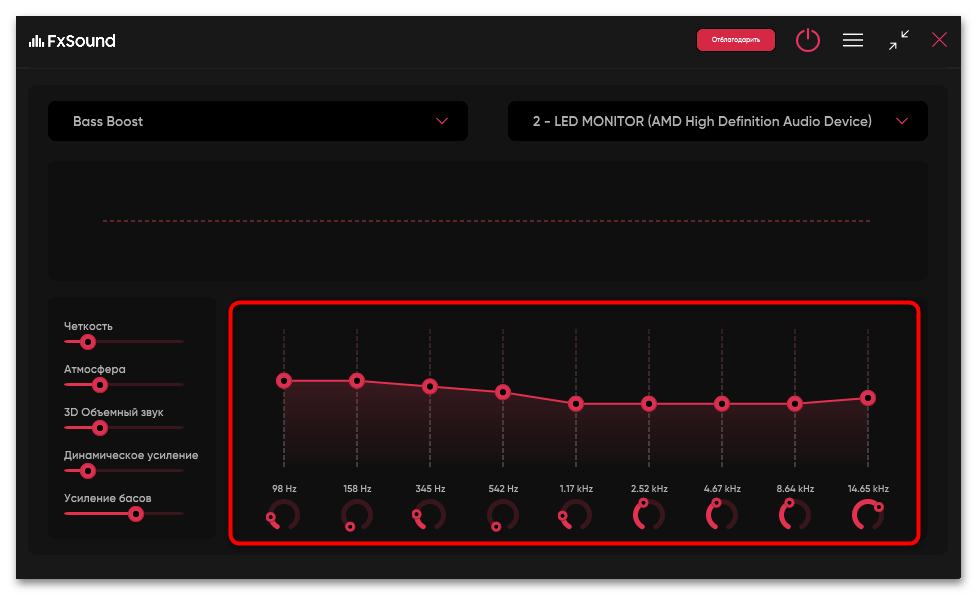
Через меню слева выбирается один из предустановленных режимов. Там же есть режим «Bass Boost» с четко выраженными и усиленными низкими частотами.
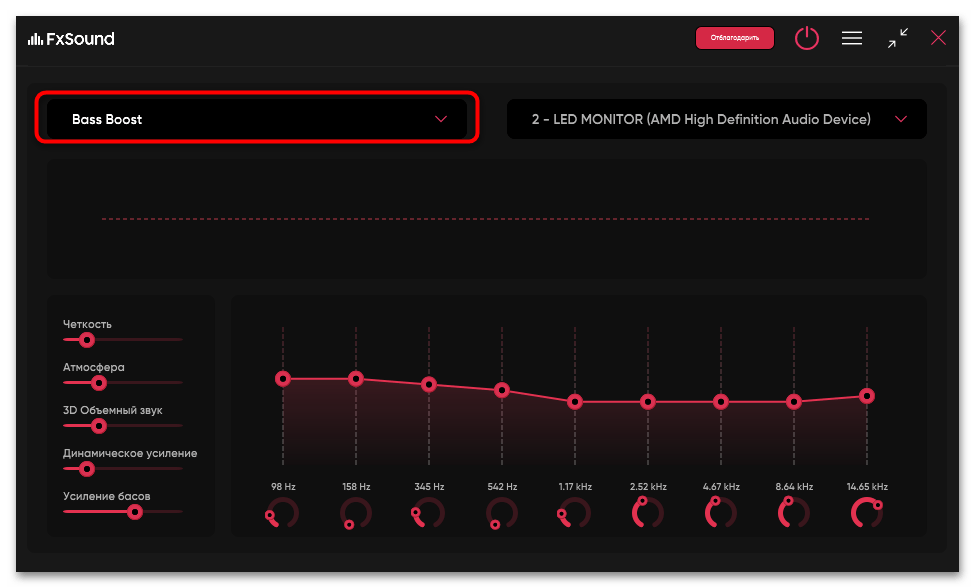
Вариант 3: Bass Treble Booster
Также следует отметить еще одну программу для настройки звучания – Bass Treble Booster, где тоже есть встроенные пресеты и 15-полосный эквалайзер. Она не требовательна к ресурсам системы и не занимает много места. К сожалению, официальный сайт больше недоступен, но Bass Treble Booster можно без труда найти на разных сайтах с каталогом софта.
В главном окне располагается эквалайзер, где регулируются частоты, в том числе низкие. Для выбора встроенного пресета достаточно кликнуть по меню «Presets». В программе предусматриваются целых три режима «Bass Boost» с различными параметрами.
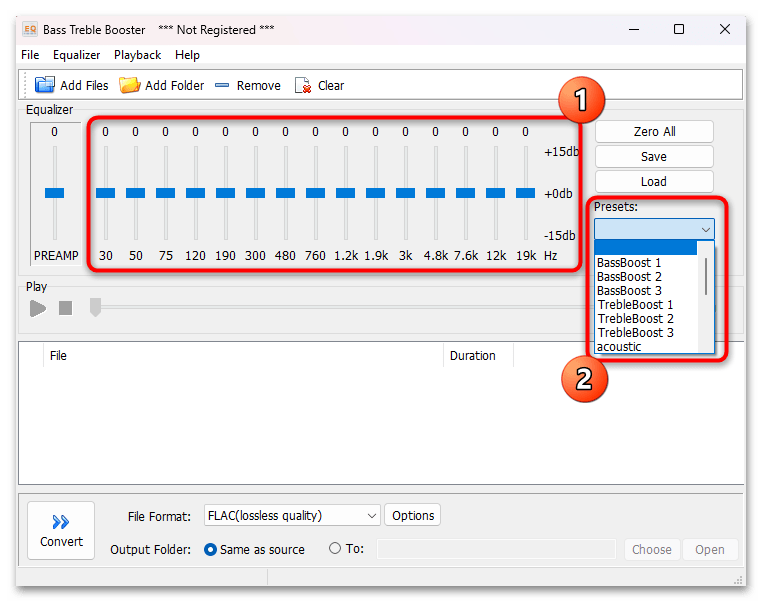
Вариант 4: Dolby Atmos
При наличии в вашей ОС функции Dolby Atmos можете воспользоваться бесплатным фирменным приложением для регулировки звукового профиля.
- Воспользуйтесь ссылкой ниже — в результате следования одной из выбранных инструкций вам надо выставить «Dolby Atmos для наушников» или «Dolby Atmos for Headphones».
Подробнее: Включаем пространственный звук в Windows 10
- Скачайте приложение из магазина Microsoft и запустите его.
Скачать Dolby Atmos из Microsoft Store
- Теперь переключитесь на вкладку «Настройки» и для начала можете попробовать готовые варианты из категории «Музыка». Выбирайте тут «Гармоничный» или «Теплый» тип. Естественно, в этот момент в целях проверки качества звучания лучше включить какую-то музыку.
- Для детальной настройки низких частот переключитесь в «Пользовательский» режим и отредактируйте их по своему усмотрению.

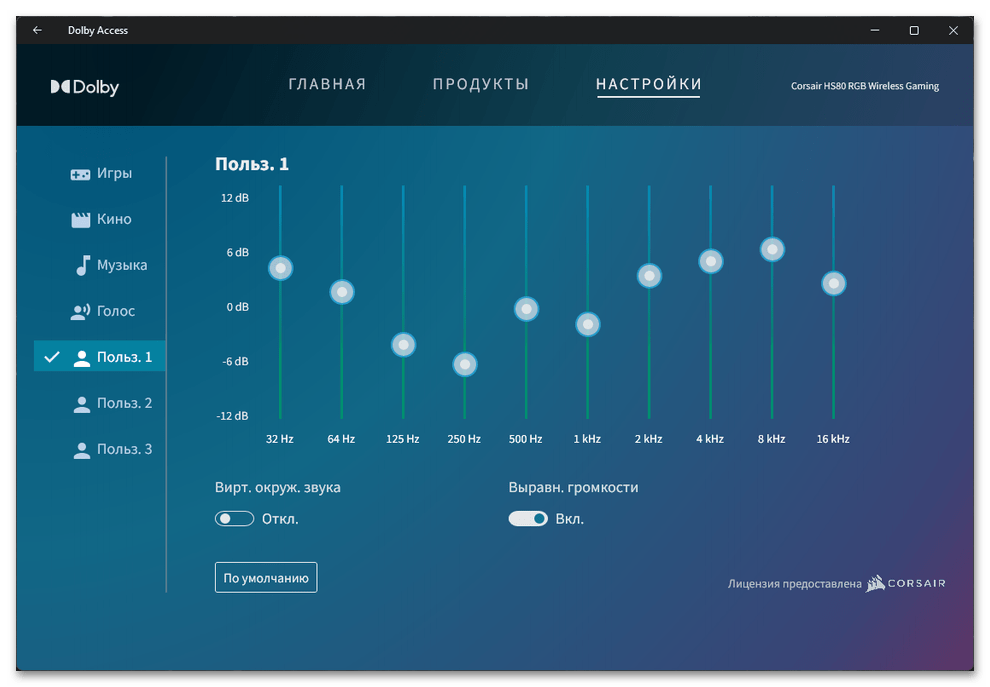
Рекомендуем также прочитать о преимуществах Dolby Atmos в интернете.
Способ 6: Возможности аудиооборудования
Обратите внимание на ваше звуковое оборудование. Некоторые аудиосистемы оснащаются аппаратными регуляторами для некоторых эффектов, в том числе и басов. Как правило, они располагаются на задней части корпуса сабвуфера.
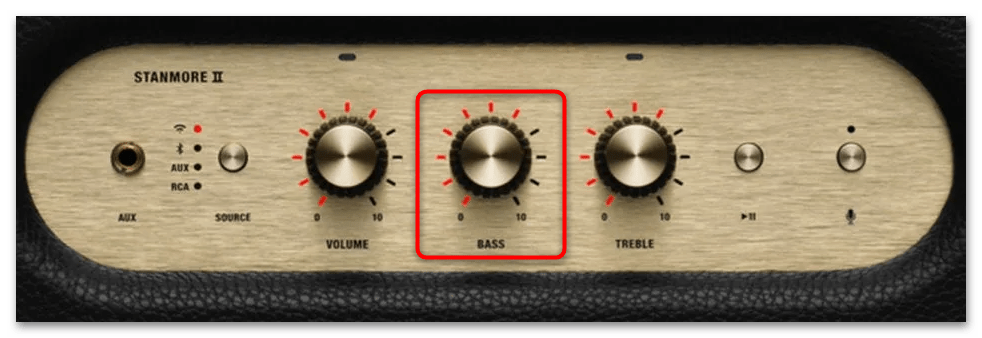
Возможности устройства реализуются в реальном времени, поэтому настроить басы можно с помощью таких регуляторов прямо во время прослушивания музыки, просмотра фильма или даже игры.
Наша группа в TelegramПолезные советы и помощь
Download Article
Quick, easy ways to get deeper, louder bass on your PC
Download Article
- Using FxSound
- Using Windows Audio Enhancements
- Using Your PC’s Audio Software
- Video
- Tips
|
|
|
|
Does the music you play on your PC sound high-pitched or tinny? Boosting the bass can help add much-needed depth to your favorite tracks. Or, if there’s a little too much bass boost, you can decrease the bass easily. Read on to learn how to get a bass boost or decrease the bass on your Windows 10 or 11 computer.
Adding Bass to Audio on Windows 10 & 11
The easiest way to adjust the bass is to install free software called FxSound. If you don’t want to install anything, use your PC’s built-in audio software, or open the Sound Control Panel, select your audio device, click Properties, and look for a «Bass Boost» option on the Enhancements tab.
-
Download FxSound from https://www.fxsound.com/download. FxSound is a free, open-source application designed to enhance your PC’s audio. You can use the built-in equalizer to boost the bass, decrease the bass when there’s too much, and even apply audio effects.[1]
- FxSound is just one of many apps that let you adjust the bass on your PC. Most of these apps cost money, but FxSound is free and works great.
- To download the installer, click the Download button, then click Save to save it to your PC.
-
Double-click the installer (fxsound_setup.exe, which is in your default downloads folder) and follow the on-screen instructions to install it.
Advertisement
-
If the app doesn’t open automatically, click FxSound in the Start menu.
- When FxSound is open, your computer’s audio will be routed through it automatically.
-
The menu is at the top-right corner. For example, if you’re listening to music through a Bluetooth speaker, select that speaker from the menu.
-
Drag the slider right to increase the bass, or left to decrease it.
- You can also use the app to adjust the equalizer manually. Also, try the other sliders on the left, such as «Clarity» (to adjust the highs and mids) and «Surround Sound» (to widen the left-right balance for a wider sound).
- Click the power button at the bottom to disable FxSound while you’re listening to hear the difference when the app is activated versus when it isn’t.
Advertisement
-
Depending on your sound card, you may be able to boost the bass in Windows 10 or 11 using the Enhancements area of the Sound control panel. If there’s too much bass, you can disable this option. To open Control Panel, type control panel into the Windows search bar, then click Control Panel.
- This method will not work for all sound cards. If it doesn’t work for you, check your PC for audio software, or use third-party bass boosting software.
- If you haven’t updated your drivers in a while, check for updates in the device manager, and then check the manufacturer’s website for updates.
-
It’s toward the bottom under the «Related Settings» header.
-
If you don’t see this option, skip to the next step.
-
This opens the Sound control panel.
-
For example, if you’re listening out of your computer’s built-in speakers, select Speakers. This opens your properties for that device.
-
If you see this tab at the top of the window, you can use this method to adjust the bass on your PC.
- If you don’t see this option, click the Advanced tab instead.
-
This will add a general bass-boosting effect to your audio.
- If you clicked Advanced, check the box next to «Enable audio enhancements.»
- If your goal is to hear less bass in your Windows audio, remove the checkmark.
-
This saves your new audio settings. Any audio you play on your speakers will have the bass boosted.
Advertisement
-
Many desktops and laptops come with apps that can help you boost the bass in your audio. For example, many HP computers come with Bang & Olufsen audio software called B&O Audio Control, and many Dell computers come with Waves MaxxAudio Pro. Many Acer models come with the HD Audio Manager app, and Asus models often come with one called Asus Realtek HD Audio.
- To look for audio software, click the Start menu (or press the Windows key) and check the list of programs for apps that contain the word «Audio» or «Sound.»
- If you installed your own sound card, go to the manufacturer’s website and download your model’s latest drivers and software.
-
The name of this tab varies by app, but it’ll usually have one of those words in the title.
-
For example, if you want to boost the bass for your built-in speakers, choose that speaker.
-
Not all audio software has this feature, but if yours does, it may be on a separate tab called «Sound effects.» An equalizer looks like many vertical lines with sliders and numbers at the bottom.
- You may not be able to adjust the equalizer for all audio devices. For example. If you selected your headphones in the last step, you may not see an option to adjust the bass or drag the sliders on the equalizer; however, choosing your onboard speaker may produce different results.
- You may not be able to adjust an equalizer, but your app could still have a «Bass Boost» option. Click around to look for any settings involving the word «bass.»
-
You can usually do this in one of three ways:
- If you can select a Bass Boost option, this will usually increase the bass significantly.
- If you have a preset menu, you can sometimes choose a «Bass» preset.
- If you have a graphical equalizer with sliders but don’t see the option to choose «Bass,» you can increase the bass by dragging the sliders on the left upwards, or downwards to decrease it. Bass sounds are generally between 20Hz and 250Hz, so increase the sliders that fall within that range. Do this while listening to music to hear the effects in real-time.
Advertisement
Ask a Question
200 characters left
Include your email address to get a message when this question is answered.
Submit
Advertisement
Video
-
Many apps, including iTunes, have built-in bass boost features and/or equalizers that you can adjust manually. If you’re listening with iTunes, click the View menu and select Show equalizer to display the equalizer, and then choose Bass Booster from the menu.
Thanks for submitting a tip for review!
Advertisement
About This Article
Article SummaryX
1. Install FxSound.
2. Open FxSound and select your speakers.
3. Drag the Bass Boost slider all the way to the right.
Did this summary help you?
Thanks to all authors for creating a page that has been read 141,905 times.
Is this article up to date?
Whether you are using your built-in computer speakers or headphones, it is essential to get the right audio decibels across all the apps and programs. The Windows operating system lets you control your volume and bass levels natively. Controlling these properly, you can get the best output sounds for your games, online meetings, and video streams.
That said, Microsoft previously included a built-in sound equalizer in both Windows 10 and Windows 11. Using it, you could control the different frequency bands and their decibel levels according to your hearing preferences. However, Microsoft then removed this essential tool, and is no longer available.
In this post, we are going to show you multiple ways to increase or decrease the volume as well as the bass so that your sounds are “just right.”
Table of Contents
How to Increase or Decrease Volume in Windows
Adjusting the volume levels on a Windows PC is pretty straightforward. Most of us already know how to do it, but there are many options available to do so. Below, we have listed down all the possible methods to increase or decrease the volume levels on a Windows PC.
Using the Keyboard Multimedia Buttons
The most efficient way of adjusting the output volume on a Windows PC is by using your keyboard. This way, you do not have to minimize any windows and you can increase or decrease the volume while staying inside your current window, even if it is in full-screen mode.
Nowadays, keyboards come with multimedia tools built directly into the keyboard. You can find them somewhere on your keyboard, or as a subscript of a key which can be used by pressing down the Function key simultaneously.

The location of the keys can be different for every manufacturer.
Some keyboards even come with scrollbars to adjust the volume and other dedicated multimedia keys.
From the Quick Access Menu
Another quick way to adjust your output volume is from the Quick Access menu.
Click on the Volume icon in the right corner of the taskbar to expand the volume settings. Here, move the slider in front of the speaker icon to the left to lower the volume, or to the right to increase it.
From Settings App
The Settings app is now the central hub for most configurations within the Windows operating system. There are multiple places from within the settings app where you can control the output volume level of your speaker and your headphone.
-
One way to adjust the output volume is from the Settings app >> System >> Sound. Here, adjust the slider in front of “Volume” to increase or decrease it.
Adjust the volume from the main Sound menu -
Another way to do it is from the device’s properties. Go to Settings app >> System >> Sound >> Output device and adjust the volume from there.
Adjust the volume from the device’s properties -
Another way to adjust the output volume is by using the volume mixer. Using this method, you can control the volumes of the individual apps and the output device that they use.
You can open the volume mixer by going to Settings app >> System >> Sound >> Volume Mixer, or opening it by right-clicking the speaker icon in the taskbar.
Open Volume Mixer from the taskbar
From Volume Mixer Applet
Before the Volume Mixer became a part o the Settings app, it used to be a standalone Control Panel applet. The applet is still available today which you can open simply by running a cmdlet in the Run Command box.
-
Press the Windows Key + R shortcut keys to open the Run Command box.
-
Run the following cmdlet:
sndvolOpen Volume Mixer applet
This will open the Volume Mixer, from where you can control the output volume level of your PC as well as individual applications.

From the Sound Applet
If you really want to get into it, you can also adjust the volume level from the legacy Sound Control Panel applet. Of course, this applet is only to be used in case the other methods aren’t working for you, since the Sound applet is used for advanced configurations.
Follow these steps to use the Sound applet to adjust your device’s volume:
-
Open the Sound applet by typing in “mmsys.cpl” in the Run Command box.
Open the Sound applet -
Select your current output sound device and then click Properties.
Open device properties The device properties window will now open.
-
Switch to the “Levels” tab.
Open the Levels tab -
Adjust the slider to increase or decrease the sound level.
Adjust the volume from the Sound Control Panel applet -
When done, click OK to close the applet.
These are all the methods to adjust the volume levels on a Windows 11/10 computer.
How to Increase or Decrease Bass in Windows
The bass is kind of the essence of the sound. Too much of it might damage your speakers or cause distortion, and too less of it might ruin the experience of the music. Hence, having just the right bass levels is essential, especially if you are an audiophile.
Previously, you could adjust the bass levels using the built-in equalizer in Windows by adjusting the decibels for the lower frequency range. However, as mentioned earlier, this is no longer an option.
Therefore, you are no longer left with many options to adjust the bass. Natively, in Windows, you can adjust the base levels from the legacy Sound Control Panel applet using the method given below.
Adjust Bass Level from the Sound Applet in Windows
Before we begin, we must inform you that the bass can be adjusted from the “Enhancements” tab inside the Sound applet. However, it is no longer available by default. Therefore, the steps given below include the steps to first make the “Enhancements” tab visible and then use it to adjust the bass level.
-
Open the Device Manager by typing in “devmgmt.msc” in the Run Command box.
Open Device Manager -
Expand “Sound, video and game controllers.”
Expand sound devices -
Right-click “Realtek(R) Audio” and then click “Disable device” from the context menu.
Disable Realtek audio -
When asked for confirmation, click Yes.
-
Right-click “Realtek(R) Audio” again and then click “Update Driver” from the context menu.
Update driver -
In the Update Drivers wizard, click “Browse my computer for drivers.”
Browse computer -
Click “Let me pick from a list of available drivers on my computer.”
Pick driver -
Now select “High Definition Audio Device” and then click Next.
Select driver The new driver available on your PC will now be installed.
-
Once the driver has been installed, close the wizard as well as the Device Manager.
This concludes making the “Enhancements” tab available inside the Sound applet. Let us now continue to use this feature to adjust the bass levels.
-
Open the Sound applet by typing in “mmsys.cpl” in the Run Command box.
Open the Sound applet -
Select the output sound device and click Properties.
Open device properties -
Switch to the Enhancements tab.
Open the Enhancements tab -
Uncheck the box next to “Disable all enhancements.”
Uncheck “Disable all enhancements” -
Now check the box next to “Bass Boost.”
Select “Bass Boost” -
Click “Settings” under the Enhancement Properties section.
Open enhancement settings -
Select the frequencies and their boost levels from the drop-down menus, then click Ok.
Adjust frequency and required boost levels 50-75Hz is usually within the sub-bass range. 75-250HZ is the bass range. 250-500Hz is within the lower midrange. 500-600Hz is within the mid-range settings.
-
Click Apply and Ok on the device’s Properties window to save the settings.
Once the steps above have been performed, check to see if you have achieved the required bass levels. If not, keep making adjustments to the boost levels from the drop-down menu, or turn off Bass Boost completely if needed.
Using Third-Party Apps
Unfortunately, there is no other native method to adjust the system’s bass levels. However, you can use third-party apps and equalizers that will do the job for you.
Here are our top 8 picks for equalizers that you can use on a Windows PC to manage how your sounds come out of your speakers or headphones.
How to Open Equalizer in Windows
We have found that Windows users are still looking to open the equalizer within the Windows OS. Let us inform you that the native equalizer has been discontinued in Windows 10 and Windows 11. Even upgrading to the latest Realtek Audio driver does not work anymore.
Therefore, the short answer to the question “How to open the equalizer” is that you can’t anymore.
How to Adjust Treble in Windows
With the discontinuation of the equalizer, there is no longer a native method to adjust the treble in Windows either. If you want to adjust the output treble, you need to use a third-party app/equalizer.
Here are our top 8 picks for equalizers that you can use on a Windows PC.
Closing Thoughts
Still not having the best sound experience? Try these methods to improve the sound quality of your output device and then check if you get what you needed.
If you find that there is still a lot of distortion, then there might be something wrong with the hardware. Try updating your audio driver, and if the problem persists, have your device looked at by a professional for any hardware damage.
We hope that his guide helped you in adjusting your sound settings to get the best audio output/
Quick Answer
- Windows offers some preset options to change the sound profile so that you can enjoy the same audio in a slightly different way, depending on your taste.
- If you prefer to use a pair of Bluetooth earphones while listening to music on your Windows computer, then there’s a feature you’ll definitely love to use.
- It boosts relatively quieter sounds and underpowers loud sounds to get a consistent sound volume without having to change the volume now and then while watching a movie or show.
Hello Windows users! Do you like to hear music on your computer while working to relax? While some may be satisfied with the default sound quality, there’s always room for improvement, thanks to the built-in sound enhancement options and apps on Windows. In this article, let’s see some handy ways to improve the audio quality and boost the bass on your PC running Windows 10 or 11.
Also, Read | 2 Ways to Increase Video Audio Volume in Google Chrome
Improve Audio Quality & Boost Bass on Windows PC
There are several ways to enhance the sound quality or bass of speakers or connected Bluetooth/ wired earphones on your Windows 11 or 10 computer. You can enable spatial audio, change audio preset, tweak equalization, etc. All methods are detailed below.
1. Enable Spatial Audio Support in Windows
If you prefer to use a pair of Bluetooth earphones while listening to music on your Windows computer, then there’s a feature you’ll definitely love to use. That’s Spatial Audio support built right into windows which helps you enjoy music with Dolby Atmos in 3D (Dolby Atmos supported headphones/earphones recommended for best results).
Here’s how you can enable it:
1. Connect your pair of Headphones / Earphones to your Windows Computer.
2. Right-click on the Speaker icon in the taskbar.
3. Go to Spatial Sound and set it to Windows Sonic For Headphones.
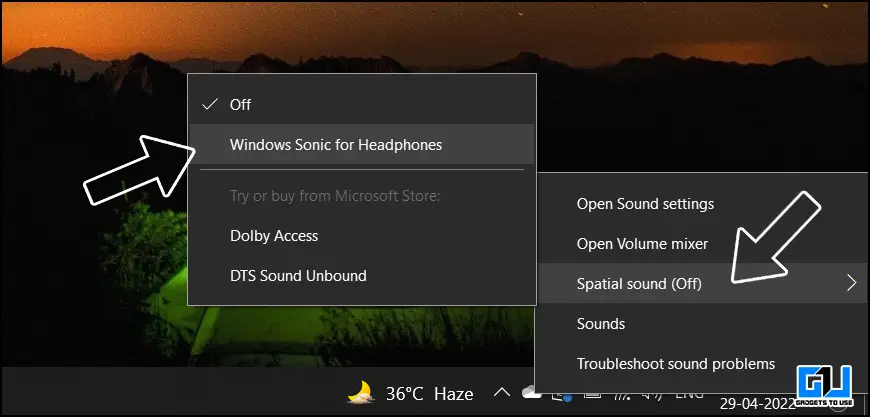
Note: You can also set it to Dolby Access or DTS Sound Unbound, but you need to download them from Microsoft Store.
Also, Read | 5 Ways to Fix Low Volume in Laptop Speakers on Windows 10 and 11
2. Change Audio Profile Preset
Windows offers some preset options to change the sound profile so that you can enjoy the same audio in a slightly different way, depending on your taste. Here’s what you can change and how it works.
1. Launch Control Panel on your Windows Computer (you can type control panel in the start menu).
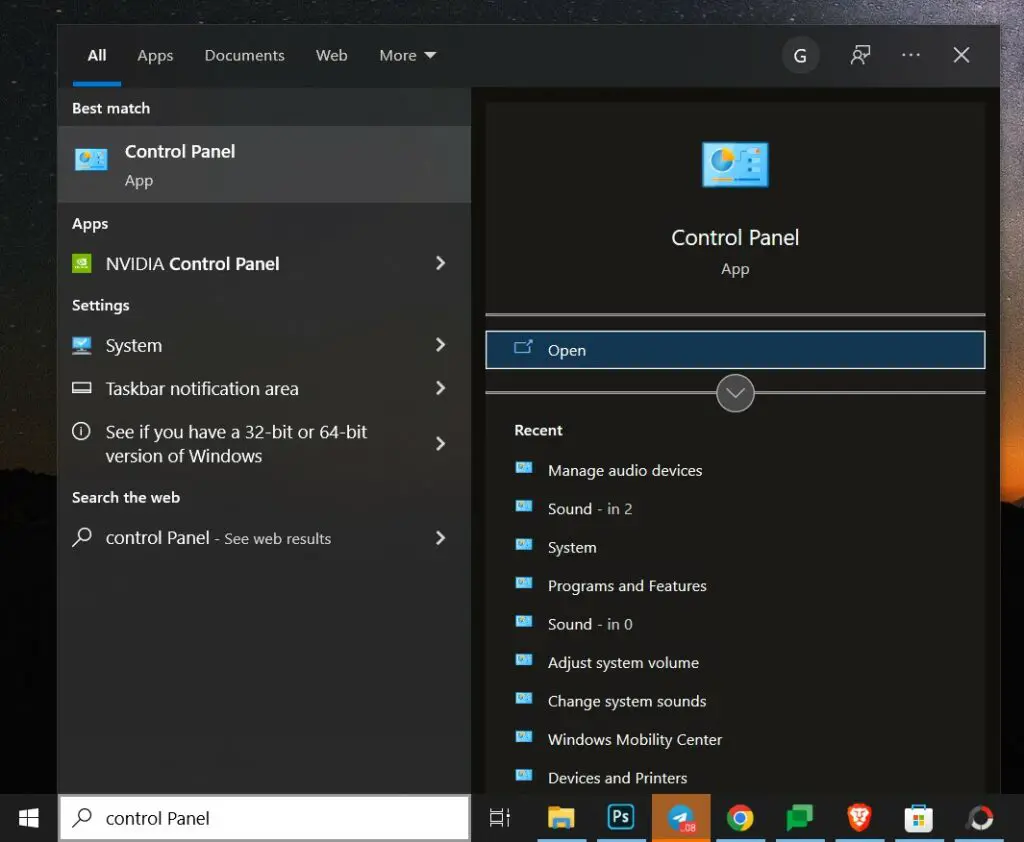
2. Go to Hardware and Sound. Set the View Style to Category from the top right for a quick search.
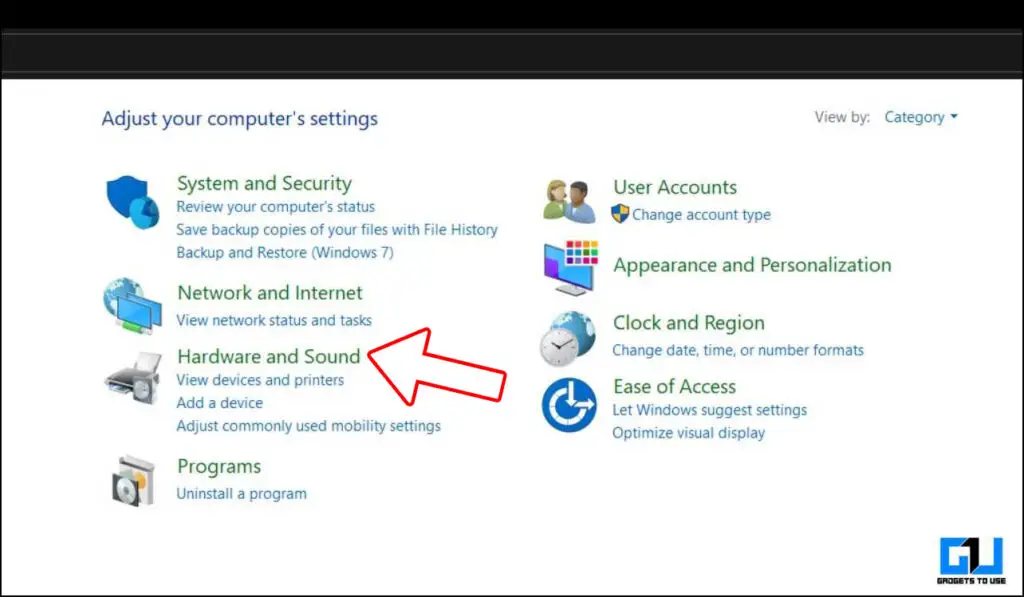
3. On the next page, click on Manage Audio Devices. This will open up a new window.
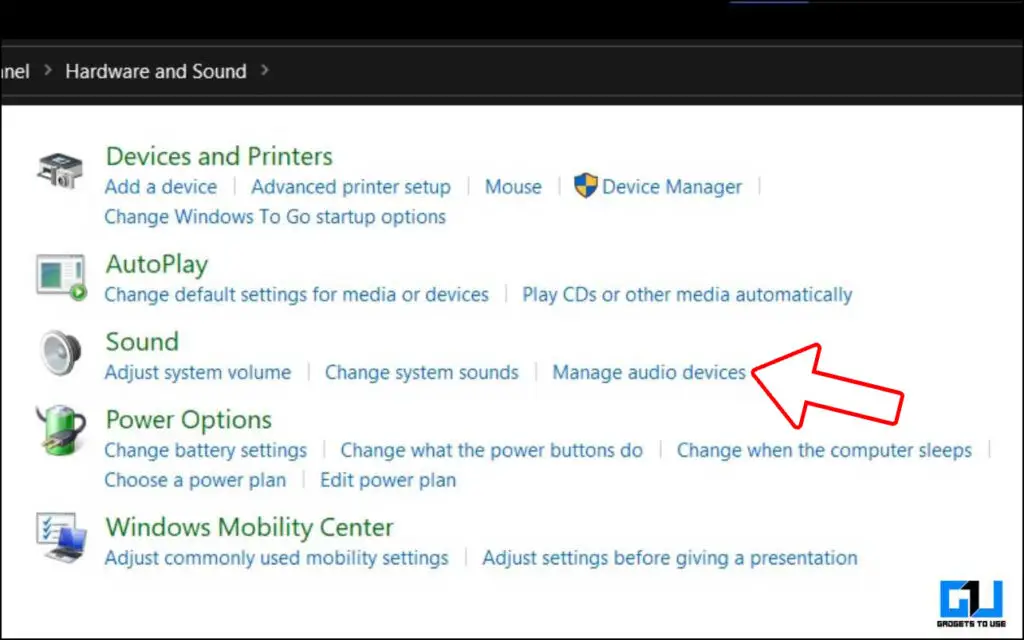
4. Inside this new sound window, select the audio device you are using. It can be the default speakers or even a pair of Bluetooth earphones. After selecting the audio device, click on Properties.
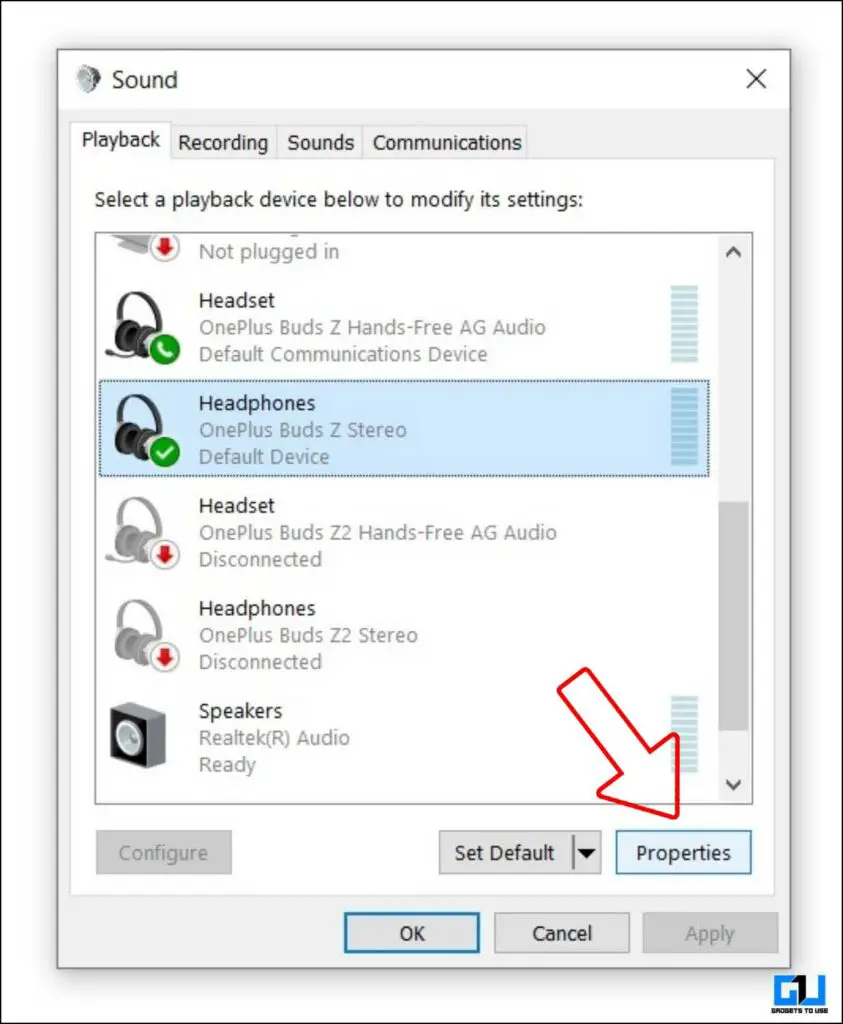
5. On the properties windows, change the tab to Enhancements. Here you will find Headphone Virtualization & Loudness Equalization.
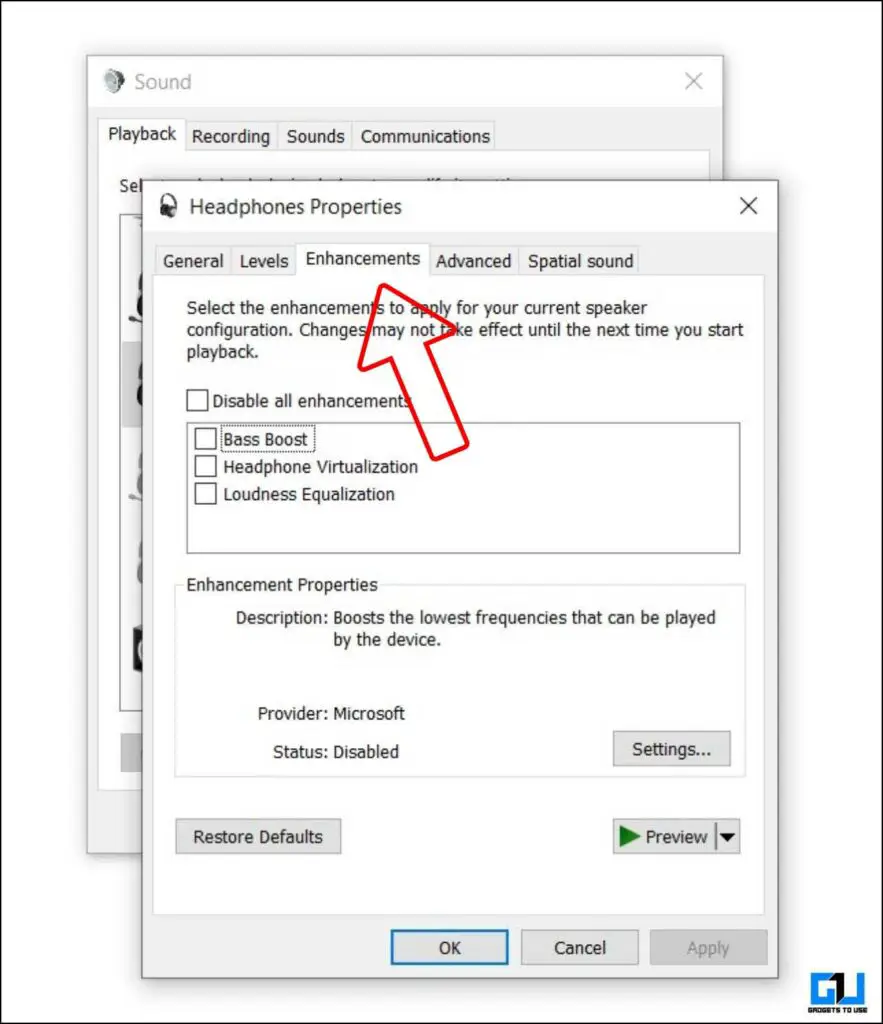
Headphone Virtualization
It uses advanced processing to create an illusion of a home theater experience while you are using a pair of stereo headphones or stereo earphones. You can select it and then go to settings to choose from three presets- Studio, Jazz Club, and Concert Hall.
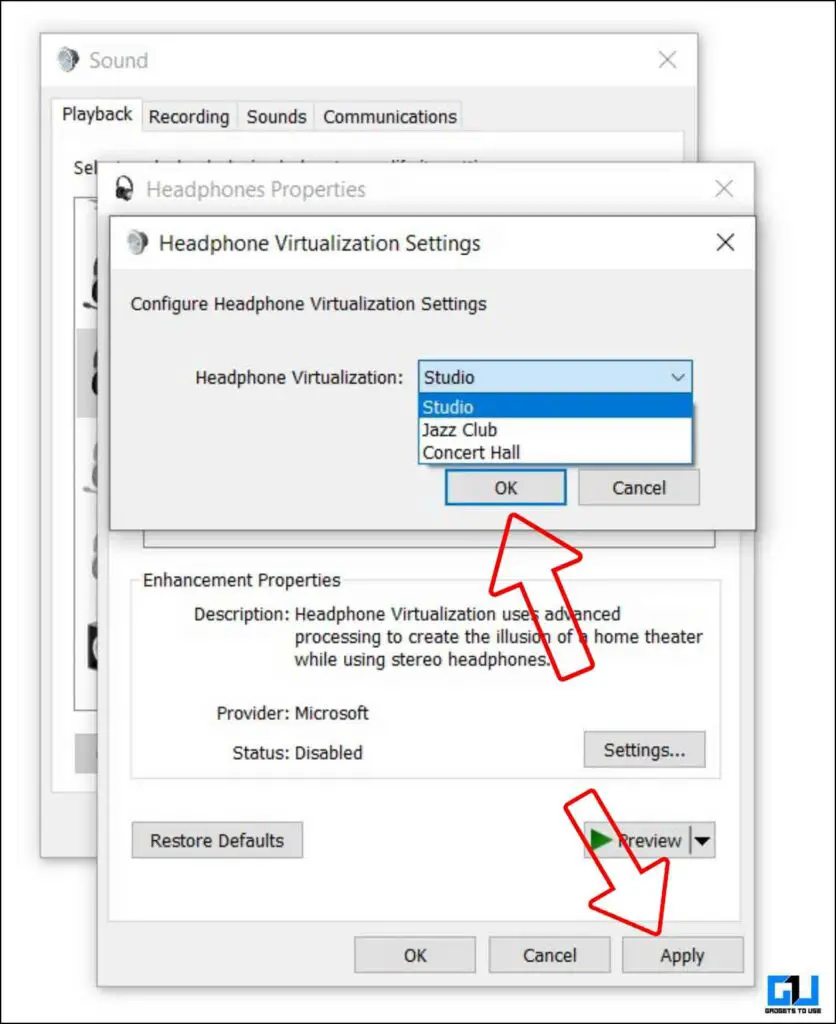
Loudness Equalization
It uses an advanced understanding of human hearing to adjust and even out the volume differences. It boosts relatively quieter sounds and underpowers loud sounds to get a consistent sound volume without having to change the volume now and then while watching a movie or show. You can even adjust this to your preference by tweaking the release time from settings.
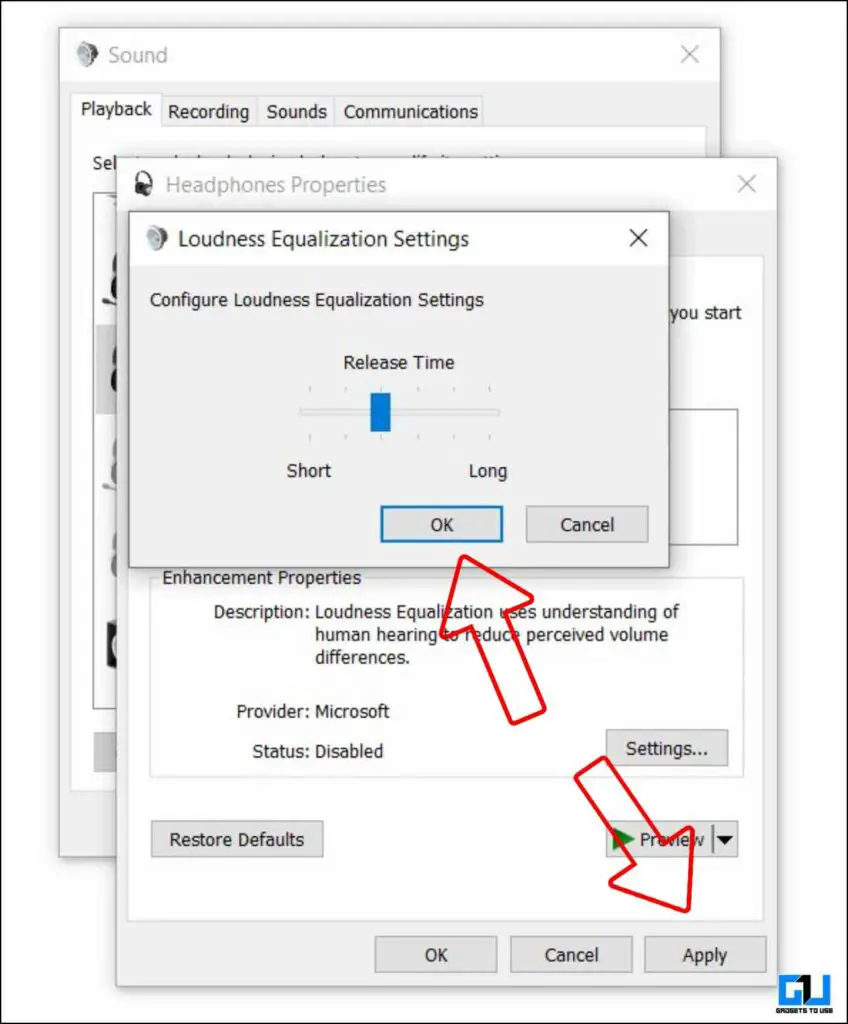
Note: Do not use Loudness Equalization while gaming or mastered audio, as you will miss the extreme lows and highs, resulting in a very unpleasant experience.
Also, Read |Trick To Increase Loudspeaker Volume On Android Phone
3. Enable Bass Boost in from Windows Control Panel
Not having enough bass feels like an empty experience, making the music or audio sound weak. One way to boost the audio bass on your Windows computer is to enable bass boost hidden under control panel settings. It will produce better bass on the audio device you are using. Here’s how you can enable it.
1. Launch Control Panel on your Windows Computer (you can type control panel in the start menu).

2. Go to Hardware and Sound.

3. On the next page, click on Manage Audio Devices. This will open up a new window.

4. Inside this new sound window, select the audio device you are using. It can be the default speakers or even a pair of Bluetooth earphones. Then, click on Properties.

5. On the properties windows, change the tab to Enhancements and select the Bass Boost option.
6. Now, tap on the Settings button under it. In the next window, you can change the frequency. The more the frequency is, the more the bass will be.
7. Click on OK to close the tab and then click Apply.
Also, Read | 6 Ways to Improve Speaker or Earphone Sound Quality On Android
4. Enable Bass Boost from Windows 11 Settings
If you are using Windows 11, you can improve the sound even from Windows Settings on your computer. Here’s how you can do it.
1. Launch Settings on your Windows Computer (you can type settings in the Start menu or from the notifications tray).
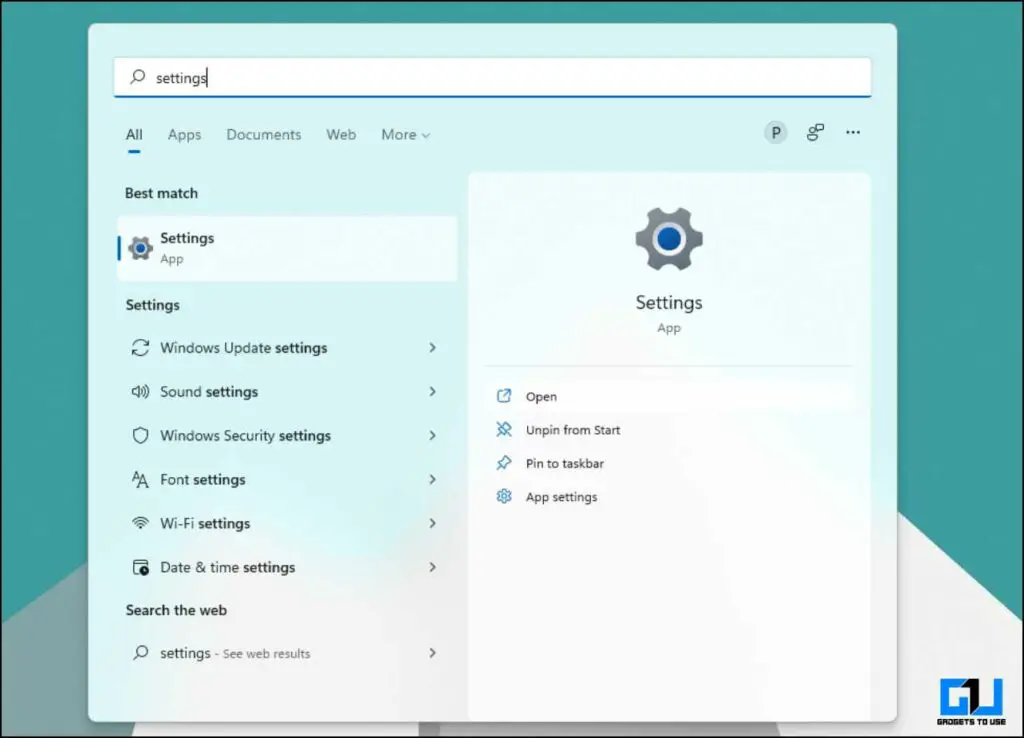
2. Go to System and further click on Sound.
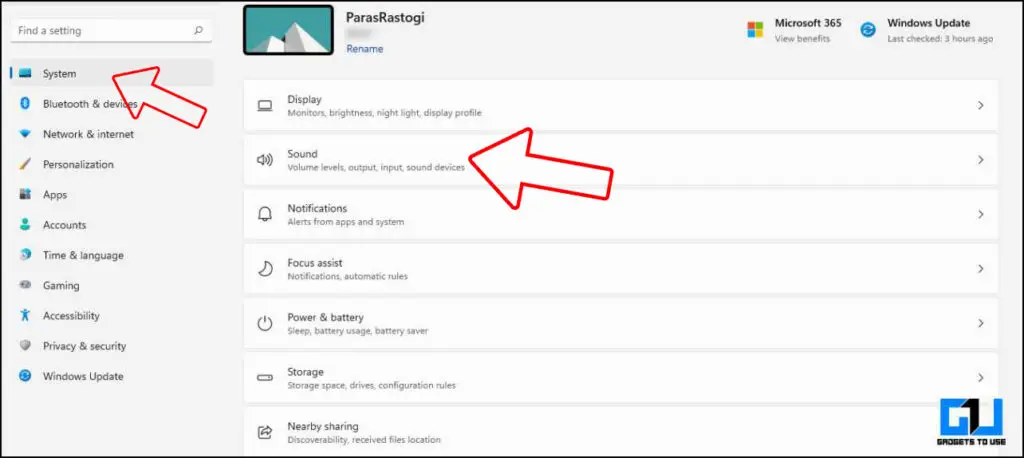
3. Under sound settings, click on All Sound Devices under Advanced Settings.
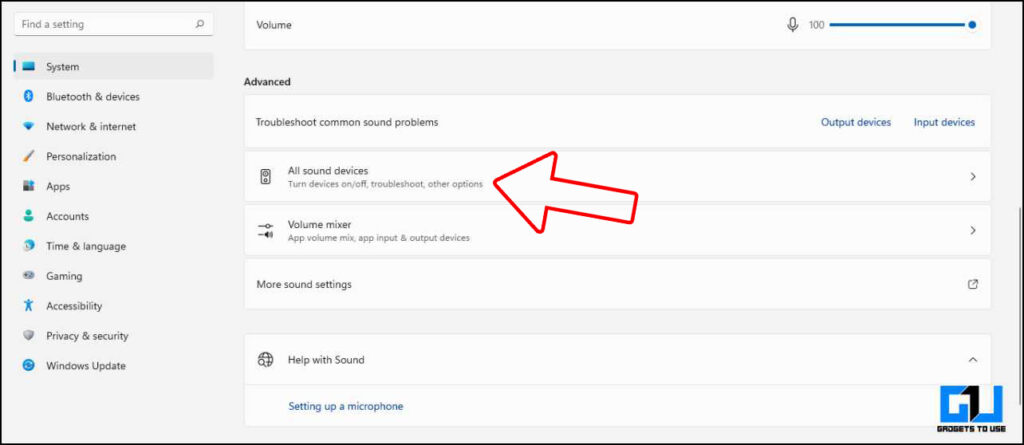
4. On the All Sound Devices page, click on the audio device you are using under Output Devices.
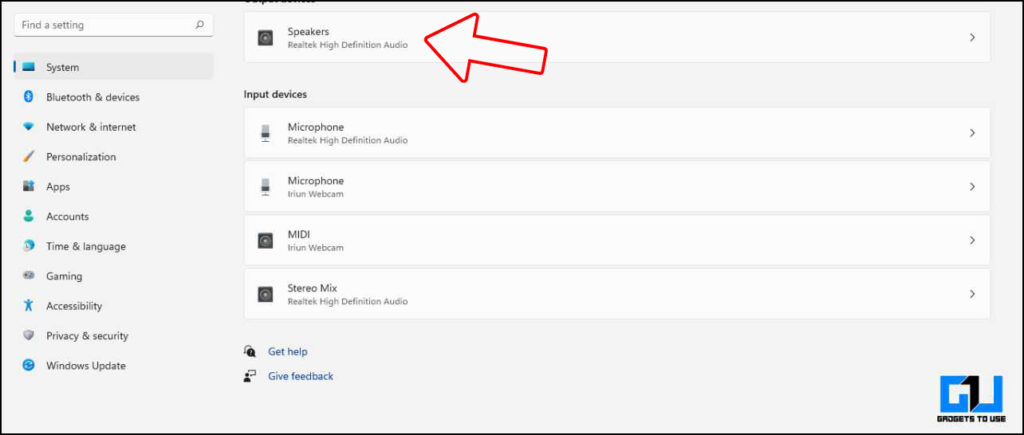
5. Enable the toggle named Enhance Audio.
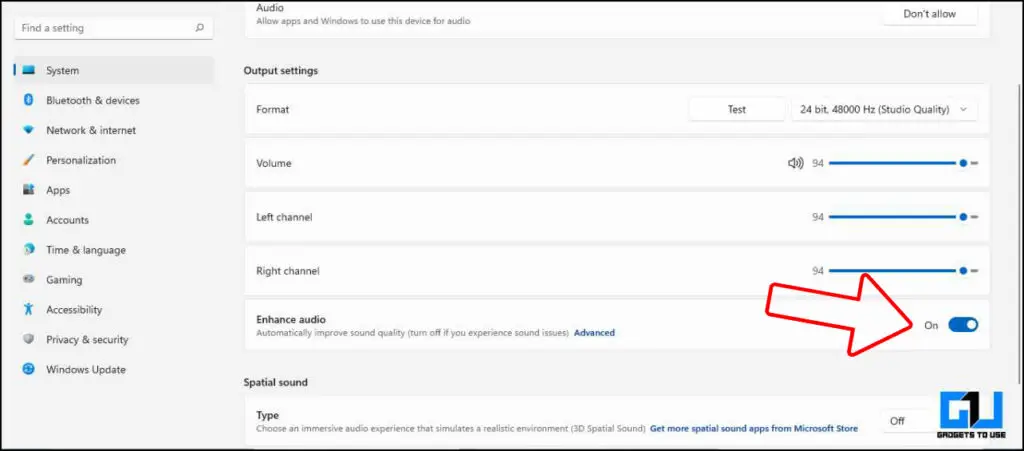
5. Boost Bass Using Third-Party Software
If you like to fine-tune the bass to your personal preference, you can use third-party software for bass boost, as they offer way more features than native support on Windows, including creating a personal bass effect profile.
Here are some of our recommended Bass Boosters Software you can use:
- FX Sound: 7.1 Surround Sound, Optimization for low-quality sources, Simple & easy UI
- Equalizer APO: Unlimited filters, Highly-customizable bass-boost options, low latency
- Bass Treble Booster: 15 Frequency settings, Drag and drop support, Ability to convert audio files
- Boom 3D [Paid]: Equalizer Presets, Advanced Audio Player, Internet Radio Stations
Also, Read | Boost Volume of Sounds & Conversations Around You on Android
Can Boosting Bass Damage Your Computer/Laptop Speaker?
Well, the answer to this question is both NO and YES. Let me explain how.

Boosting the bass of any speaker does result in increasing the overall volume. Every speaker has an upper limit to produce volume. If you increase bass marginally and only up to the permissible limit of the speaker, then it won’t damage the speaker.
However, if you exceed that limit and push the bass and volume to their limits, the speakers will wear out quickly, making them sound very feeble and without any bass.

Another explanation for this is that when the bass boost is activated, the bass driver in the speaker needs more air to push the audio waveform. The more air the driver pushes out, the more the speaker cone moves. If this puts more pressure on the cone than it can bear, it will break the speaker cone. For this, you need to check the speaker’s sound pressure level (SPL), which is measured by a Decibel Meter.
Also, Read | Low Volume in Chrome? Here’s the Trick To Boost Volume in Chrome Tabs
Wrapping Up

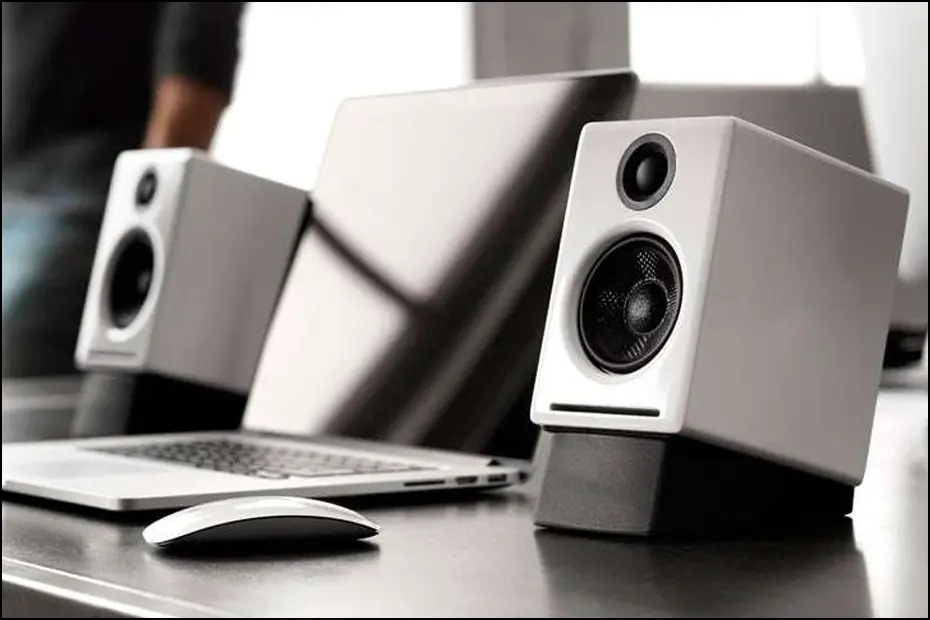
So these are some ways you can enhance the audio quality and bass of your Windows computer running on Windows 10 or Windows 11. Keep in mind that pushing the bass to the speaker’s limit can damage any speaker. So before tweaking the bass and volume, make sure to check the SPL of the speaker. Also, Instead of tweaking the internal speakers of your laptop or notebook, it’s better to get a pair of external speaker and tweak them. Stay tuned for more such tech tips and tricks.
You can also follow us for instant tech news at Google News or for tips and tricks, smartphones & gadgets reviews, join GadgetsToUse Telegram Group or for the latest review videos subscribe GadgetsToUse YouTube Channel.
Was this article helpful?
YesNo
Sign in to your MUO account

For those of you who don’t like weak audio or are fond of feeling the resonance in your body rather than just hearing the music through your ears, it is definitely important to be able to adjust the bass on your Windows device.
In this guide, we will walk you through the steps of doing so in detail. The methods in this guide work for both Windows 10 and Windows 11 users.
1. How to Adjust the Bass on Windows via the Enhanced Audio Feature
One of the easiest ways to adjust bass and almost all other advanced sound features like room correction and loudness equalization is via Windows Settings. Like the previous Windows versions, Microsoft has included a dedicated Sound section in Windows 11 Settings as well.
For demonstration, we will be using Windows 11 to enable the Enhanced Audio feature for boosting the bass, but the steps are safe to be followed by Windows 10 users too.
Follow these steps to proceed:
- Press Win + I together to open Windows Settings.
-
In the Settings window, head over to System > Sound.
-
Head over to the Output section and click on Speakers.
-
Turn the toggle on for Enhance audio under Output settings.
- Then, click on the Advanced option right under Enhance audio. This should launch a Speaker Properties dialog.
-
Checkmark the Bass Management option.
- Click on Apply > OK to save the changes.
This should increase the bass on your device. If you want to disable the Bass Management option in the future, you can either disable the Enhanced audio feature directly or uncheck the Bass Boost option by following the steps we have mentioned above.
Keep in mind, however, that disabling the Enhanced audio feature will automatically disable all the other audio features it offers, like Room correction.
2. How to Adjust the Bass on Windows via the Control Panel
Another way to adjust the bass on Windows is via Control Panel. The outcome of this method is almost the same as the method we just discussed above, but the steps vary.
Here is how you can use the Control Panel to adjust bass:
- Type Control Panel in Windows search and click Open.
-
In the following window, click on Hardware and Sound.
-
Head over to the Sound section and click on Manage audio devices. This will launch a Sound dialog.
-
In the Playback tab, select your preferred audio source and click on the Properties button.
-
Navigate to the Enhancements tab and check/uncheck the Bass Management option as per your preferences.
- Click Apply > OK to save the changes.
If you use Windows Media Player to play your audio or video files, then you can adjust the bass settings on that app specifically. This method is ideal for those of you who use the Windows Media Player as your default audio/video player.
Follow these steps to proceed:
- Open Windows Media Player and in the Now Playing mode, right-click anywhere on the screen.
-
Choose Enhancements > SRS WOW effects.
-
Turn on/off Trubass and check if the bass has been adjusted according to your requirements.
4. Ensure You Have the Right Drivers for Playing Bass
The drivers installed on your operating system serve as a connecting bridge between the system and the hardware.
To make sure that the drivers work as they are supposed to, we highly recommend you download the drivers from the official website of your manufacturer.
You can do this by visiting the manufacturer’s website, looking for the latest version of the driver (sound card driver, in this case), and downloading it according to your Windows version (32-bit or 64-bit).
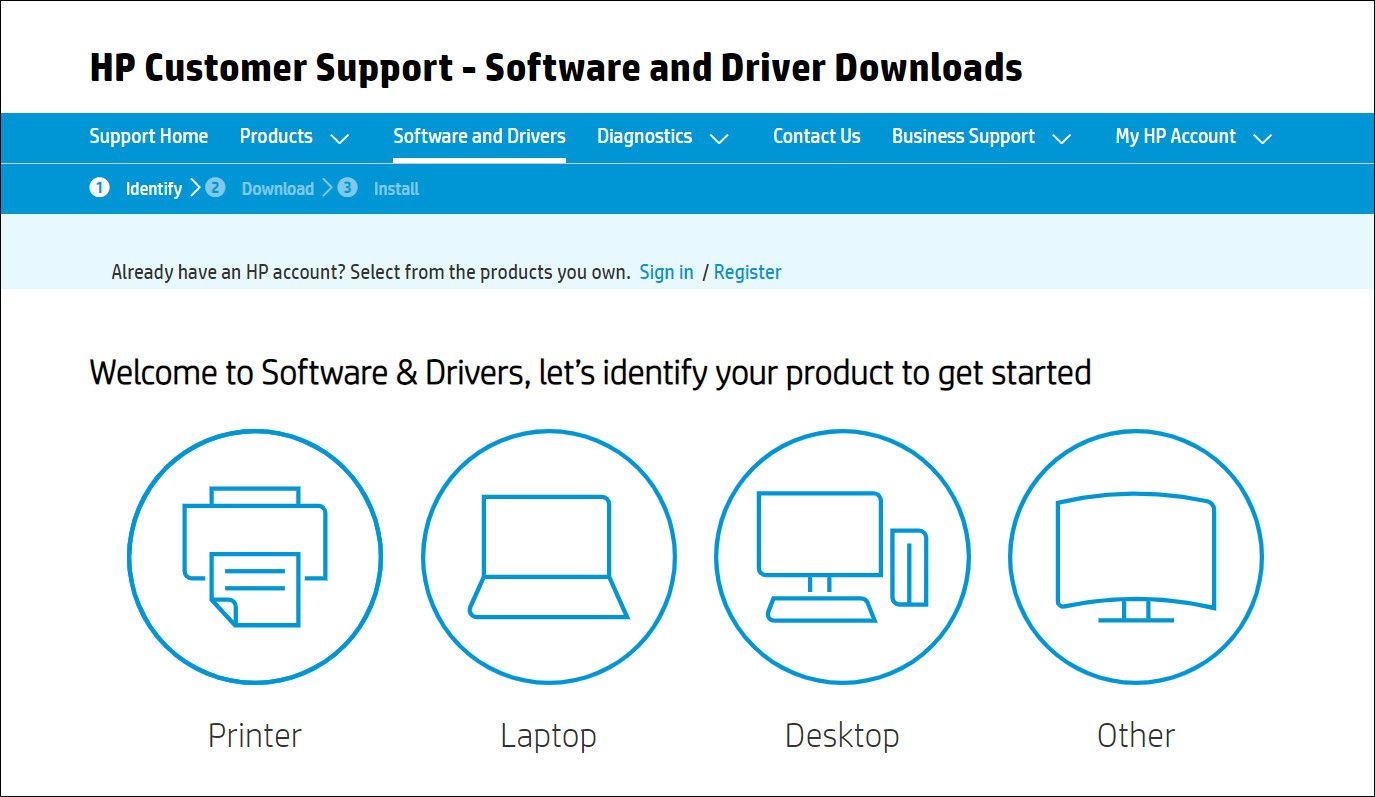
After downloading the driver, install it on your system by following the on-screen prompts. Once it is downloaded, you can restart your PC and test the driver.
You must also make sure that the drivers installed on your computer are always up-to-date. Outdated drivers are often prone to corruption issues and can easily become incompatible with the system.
You can find the latest available updates for your drivers in the Optional updates section of Windows Updates. Simply head over to Windows Settings > Updates & Security > Windows Updates. Click on Optional updates and install any pending updates that might be available.
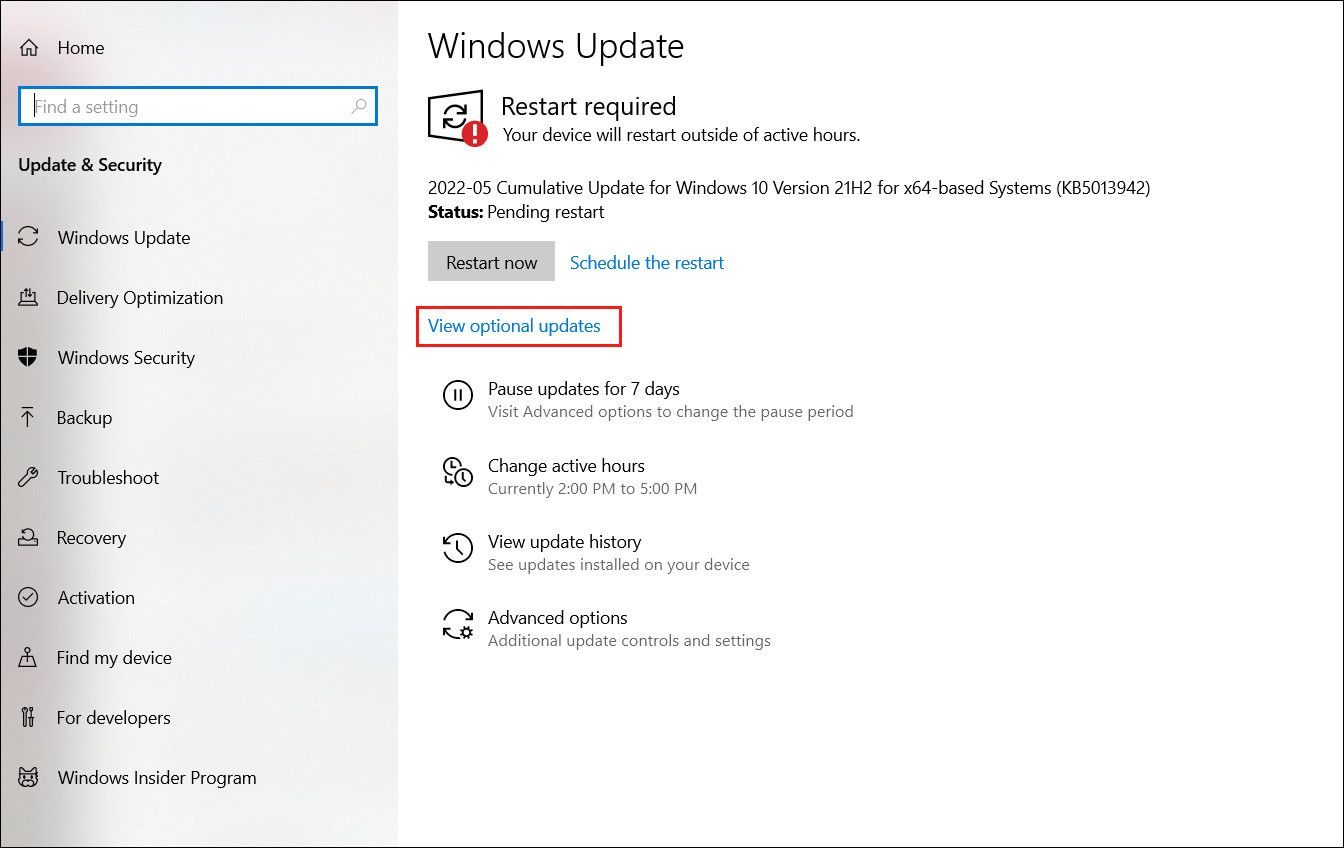
You can also use the Device Manager to reinstall and update the drivers.
5. Use Third-Party Software
While Windows offers reasonable ways to adjust the bass on your device, you can try using third-party software if you want to make some advanced-level changes. Here are some of the most famous bass-adjusting third-party programs:
- Equalizer APO
- Bass Treble Booster
- FX Sound
If you are looking for a program with a simple interface and some basic functionality, FX Sound is a good choice. However, for additional features like filters and editable frequencies, you can consider using Equalizer APO and Bass Treble Booster.
All three tools are free to download and use on Windows. Simply head over to the official website and download the right file according to your Windows version.
You may also want to consider getting a good subwoofer if your regular speakers aren’t able to cope with the bass-heavy tracks. In case you are not a speaker kind of person and prefer wireless earphones with strong bass, check out our detailed review of The Tranya T10.
Listen to Music With Both Body and the Ear
The methods mentioned above should help you adjust the bass on your Windows device within a few minutes. Here, it is also important to note that contrary to the popular belief, the bass does not damage your ear. The small-diaphragm in your ear properly responds to higher frequencies but since it is not large enough, the bass does not affect it.


